At 10 PM on January 18th, we arrived in the city of Kerman, the 10th most populous city in Iran with a population of 900,000. We didn’t come to Kerman for the city itself, but for the many interesting sights that surround the city, including the Lut Desert, A UNESCO World Heritage Site.
Exhausted after a 5½-hour long bus journey, we decided to settle for the first cheap hotel that we could find, and thus ended up at the Omid Hotel. The price for the hotel was cheap, but the standards were the lowest we’d seen. The rooms were rather dirty, the beds hard and Wi-Fi non-existent. We weren’t sure what our plans for Kerman and the surrounding areas were, so we needed Wi-Fi to research, so the next morning, we went to a nearby internet café to sort things out.
We decided to visit Akhavan Hotel, as we had read that they offer tours to the Lut Desert. When we first walked in through the gates to the hotel, our reaction was “wow, we could never afford to stay there!”, but it turns out that the owners of Akhavan are extremely friendly and helpful, and they told us that since we were budget travellers, we could get a private room for just 25 USD!! Yes please, deal! Akhavan is the best hotel we’ve stayed at in Iran, and Omid was the worst, so the contrast was quite funny – and especially because the “luxury hotel” (in comparison) was only 10 USD more for the both of us. So, accommodation in Kerman was sorted, and now we just needed to figure out which tours we wanted to do!
We had a few things on our list of things to see in the area, and apart from the desert, that included the ancient city of Bam, the troglodyte village of Meymand and the citadel at Rayen. The guys at the hotel offered us two tours for decent prices, one afternoon/evening tour of the Lut Desert, and one full day tour to Bam, Rayen, Mahan (a Persian garden) and the Colour Mountains. This meant that there would be no time to visit Meymand, as it’s located in the opposite direction of everything else, so we’ll just have to come back to Iran someday to see that! Apart from Meymand, the two tours included all the sights that we wanted to see plus more and it only cost us 35 USD each in all!
Half an hour after we had arranged the tours, it was time to leave for the first one. Our driver picked us up at Akhavan Hotel and off we were to the desert! I was excited to explore a desert again, which would be the first time since visiting the Gobi Desert in Mongolia back in May. Iran is a desert country, so it would’ve been wrong to go there without seeing one!
The Lut Desert, also known as Dasht-e Loot, is a large salt desert and is the world’s 27th largest desert. Temperatures in the desert can reach 70°C in summer, making it one of the driest and hottest places on Earth, but thankfully, we were going there during the mild winter.
The first place that we went to was the 1000-year-old Shafi’abad Caravanserai, located in a tiny village 10 km. from Shahdad, a city located at the beginning of the desert. A caravanserai is an ancient roadside inn, where caravaners travelling along the Silk Road could rest and recover from the day’s journey.
The caravanserai was much more interesting than the more touristy one that we saw in Meybod, which wasn’t really worth the visit. In this one, we could really feel the presence of history and although some of it had been restored, quite a big part of the caravanserai was left in its original form.
Outside the caravanserai, we saw the first dog that we had seen in all of Iran! I was seriously beginning to think that dogs aren’t a thing there!
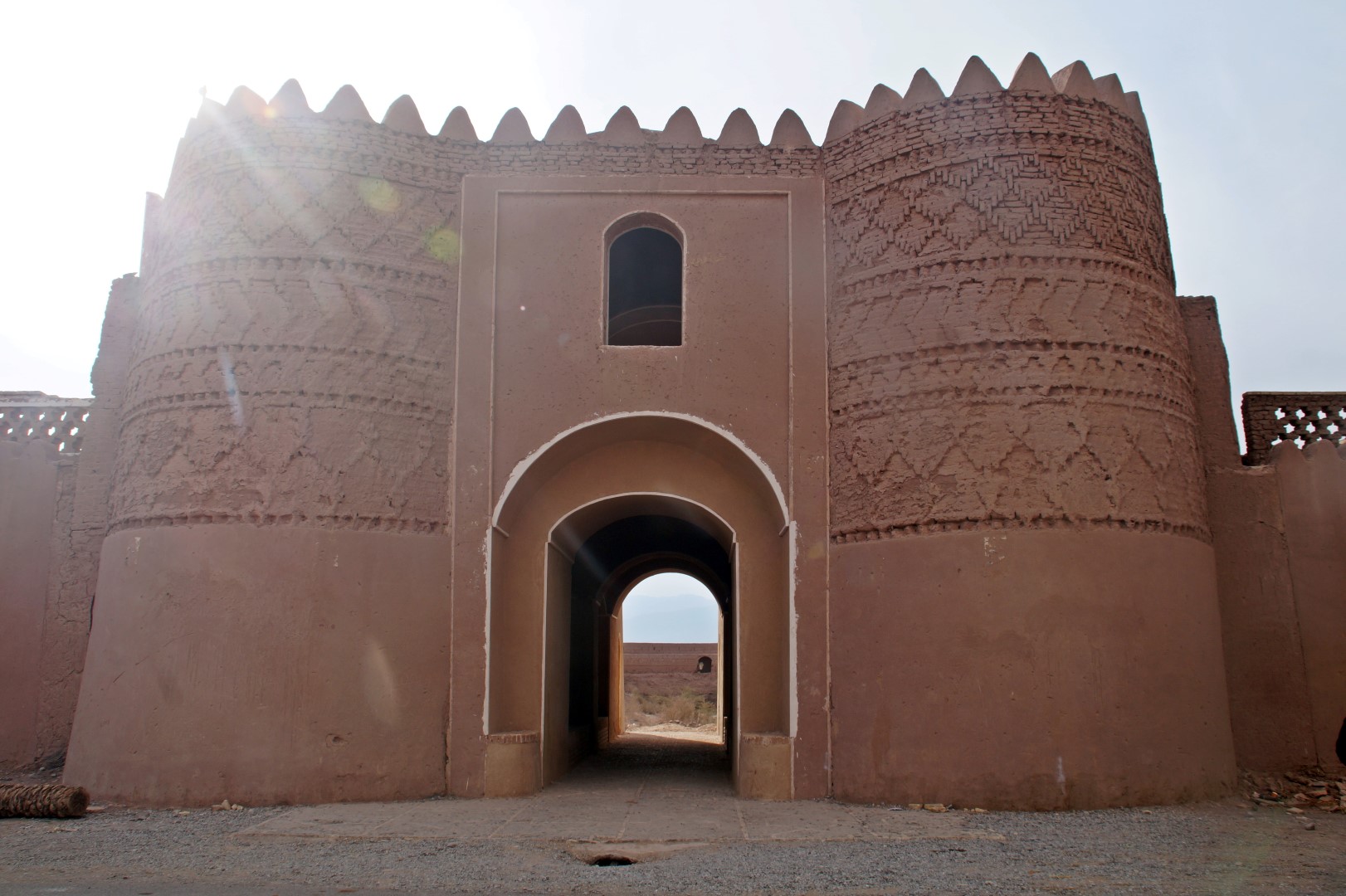
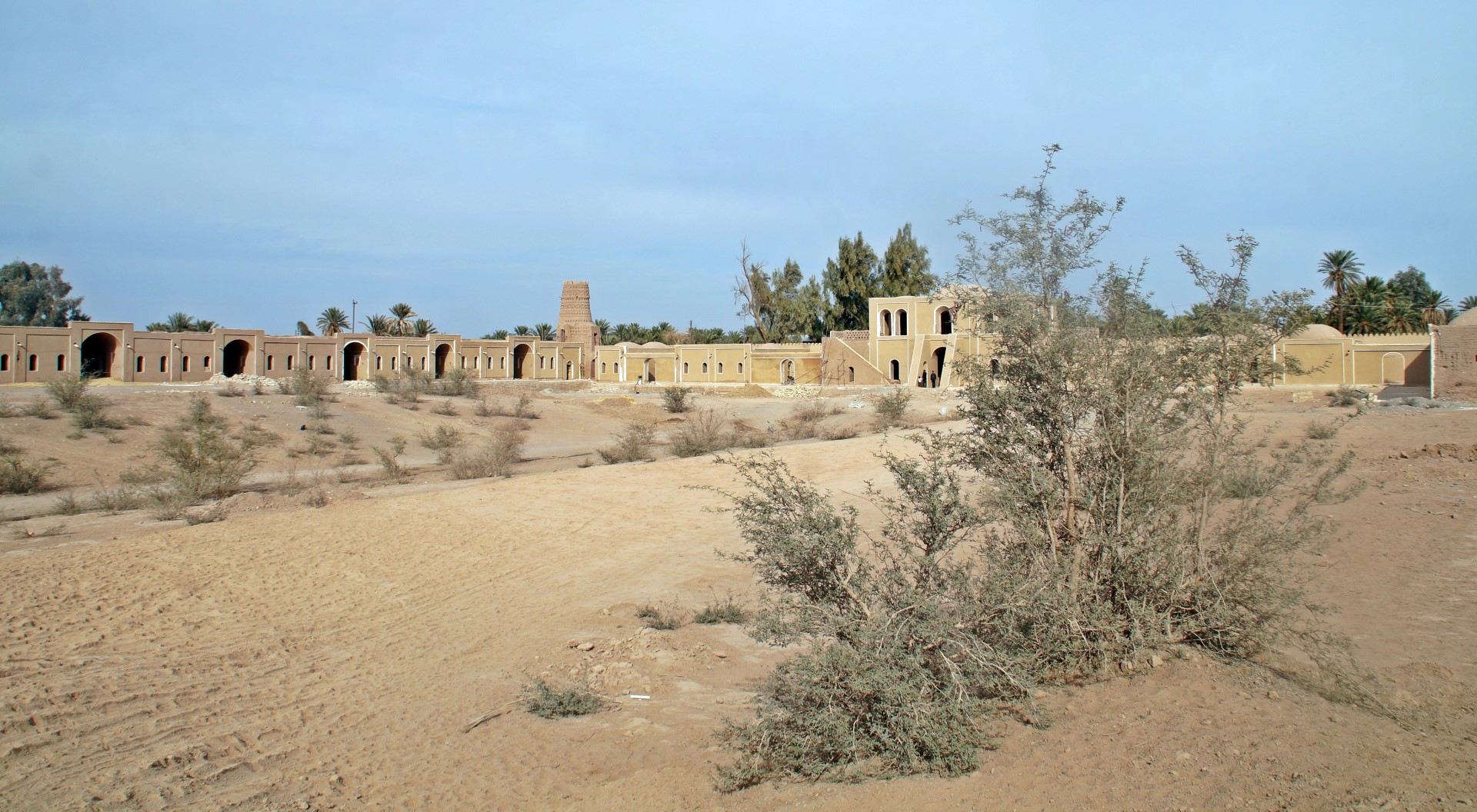
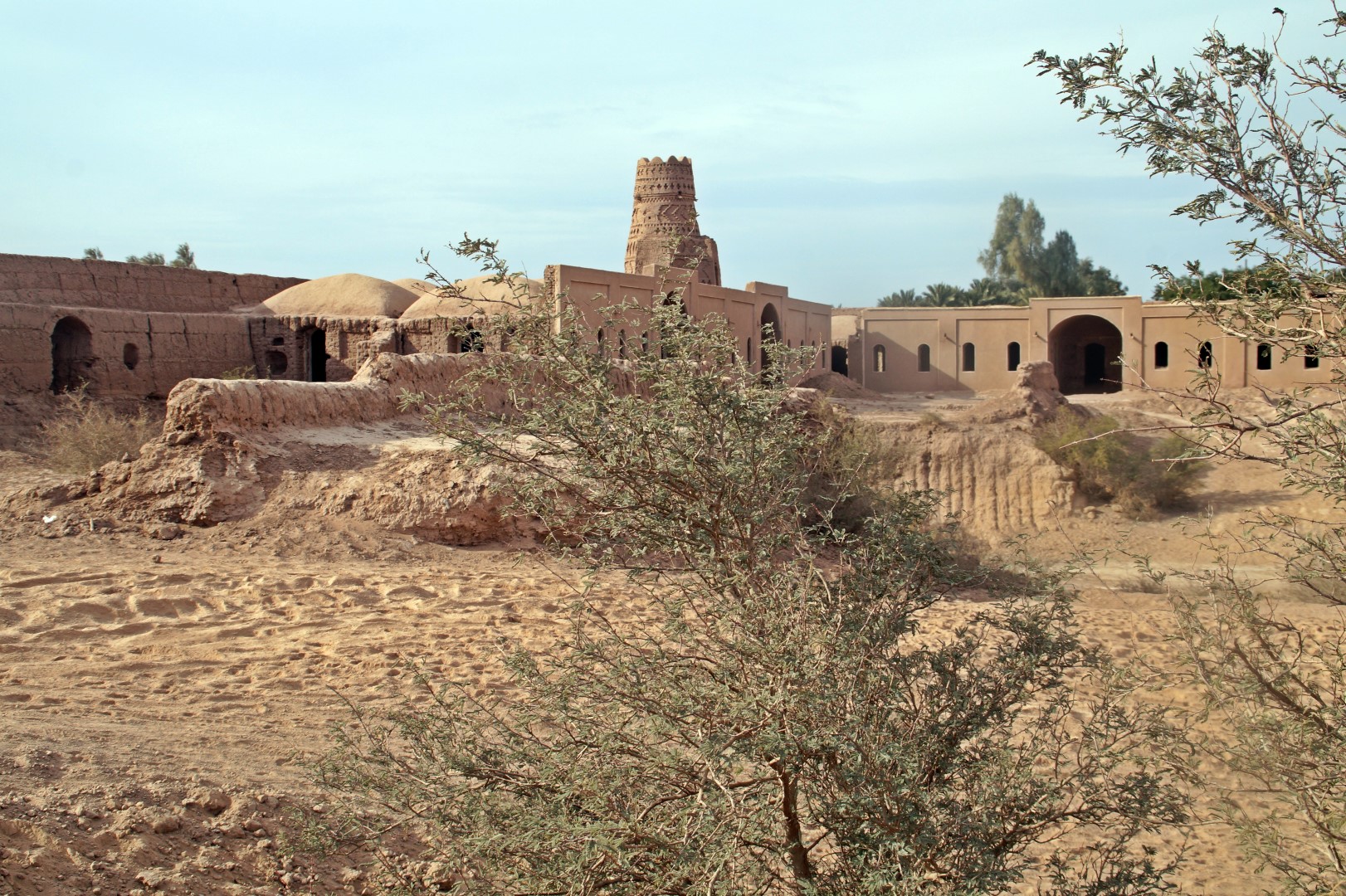
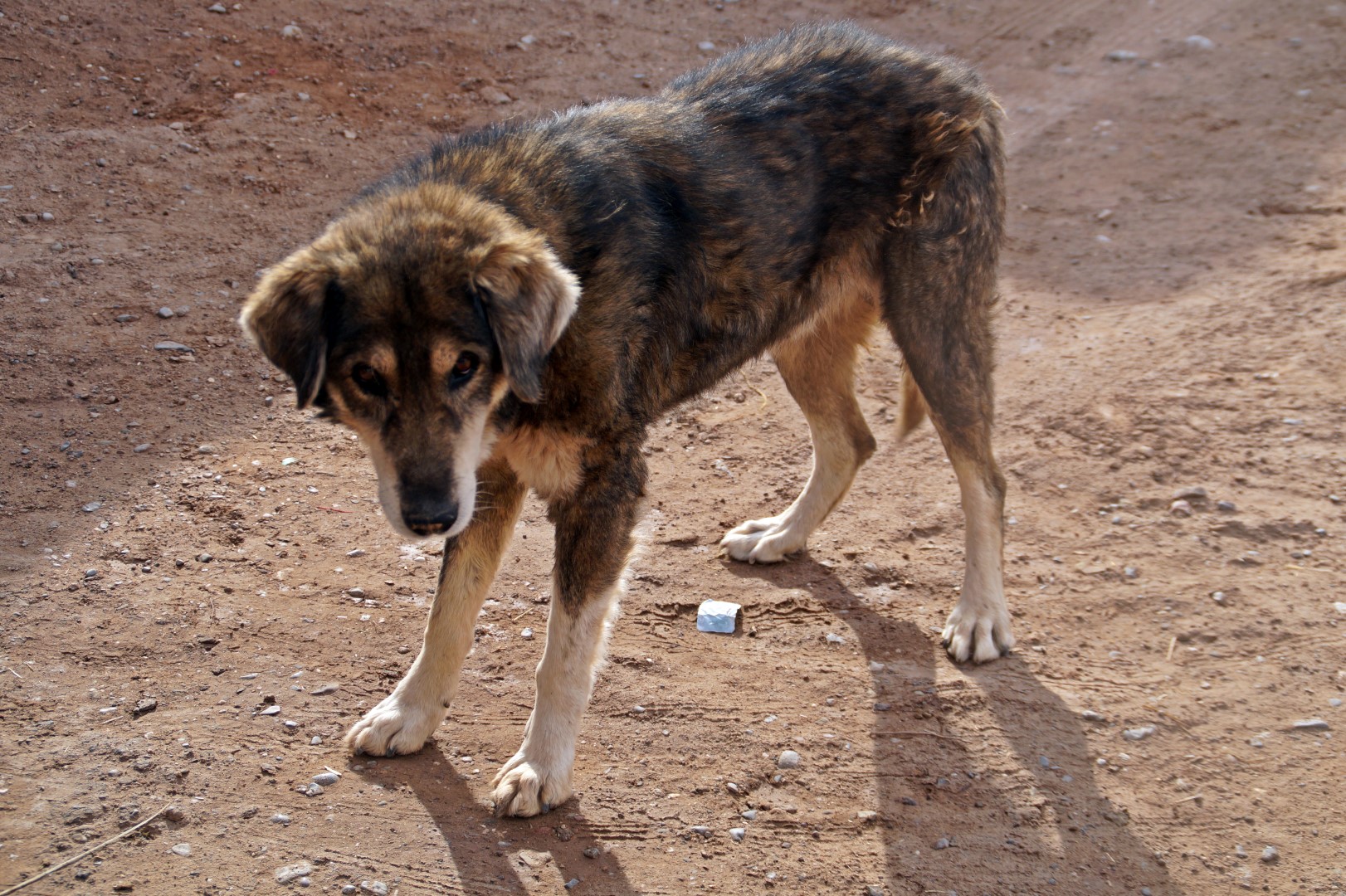
After leaving the tiny village, we drove straight into the desert. We passed by the Kaluts and the Egg Hills, which we would be stopping at on the way back, and drove all the way to the Shur Salt River, which originates from the Birjand Mountains and is the only permanent river that flows through the heart of the Lut Desert.
The salt river was an awesome experience. I’ve never seen – or tasted – such salty water before! I like to get my hands in stuff, so I went digging below the water and found the most soft clay right below the surface. I felt like making pottery right there!
A group of people were sitting across from the river eating some dinner, and three of the girls came over to talk to us while I had my hands in the clay. Just like the majority of the Iranians that we have met, they were curious about where we come from and how we liked their country. They were really sweet and after talking for a while, they offered us some food to take with us on the journey through the desert. This really goes to show just how generous the Iranian people are!
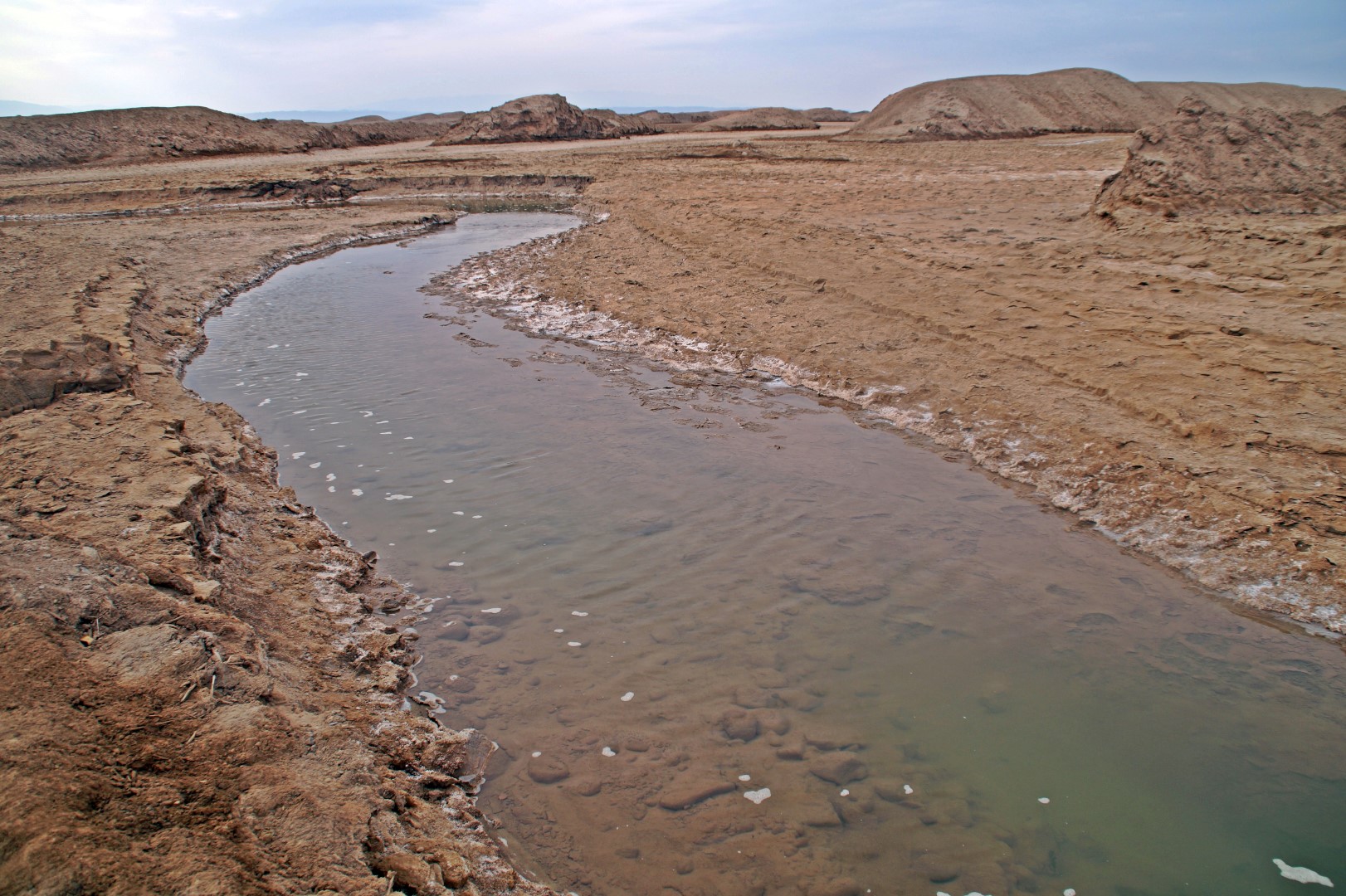
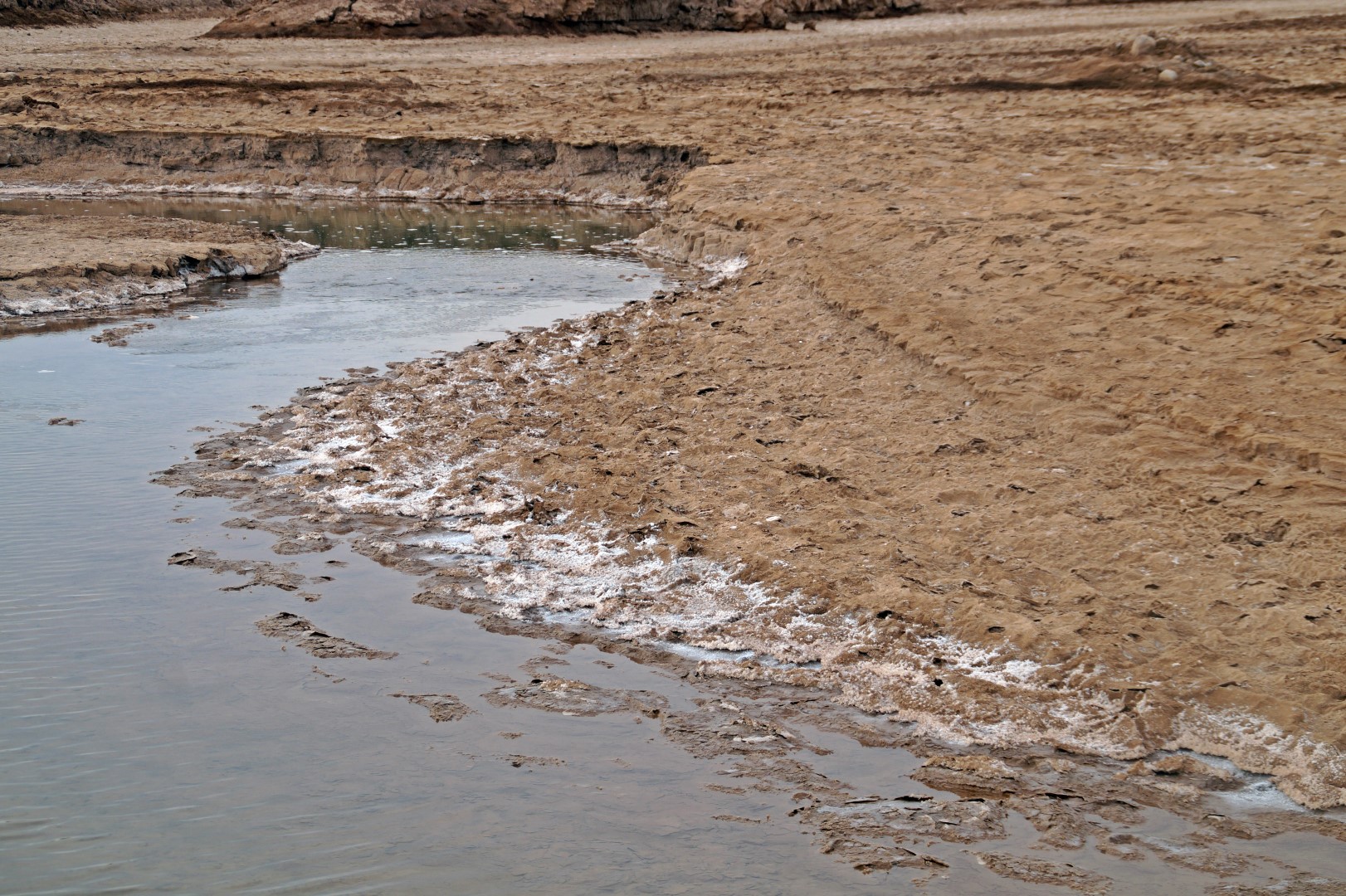
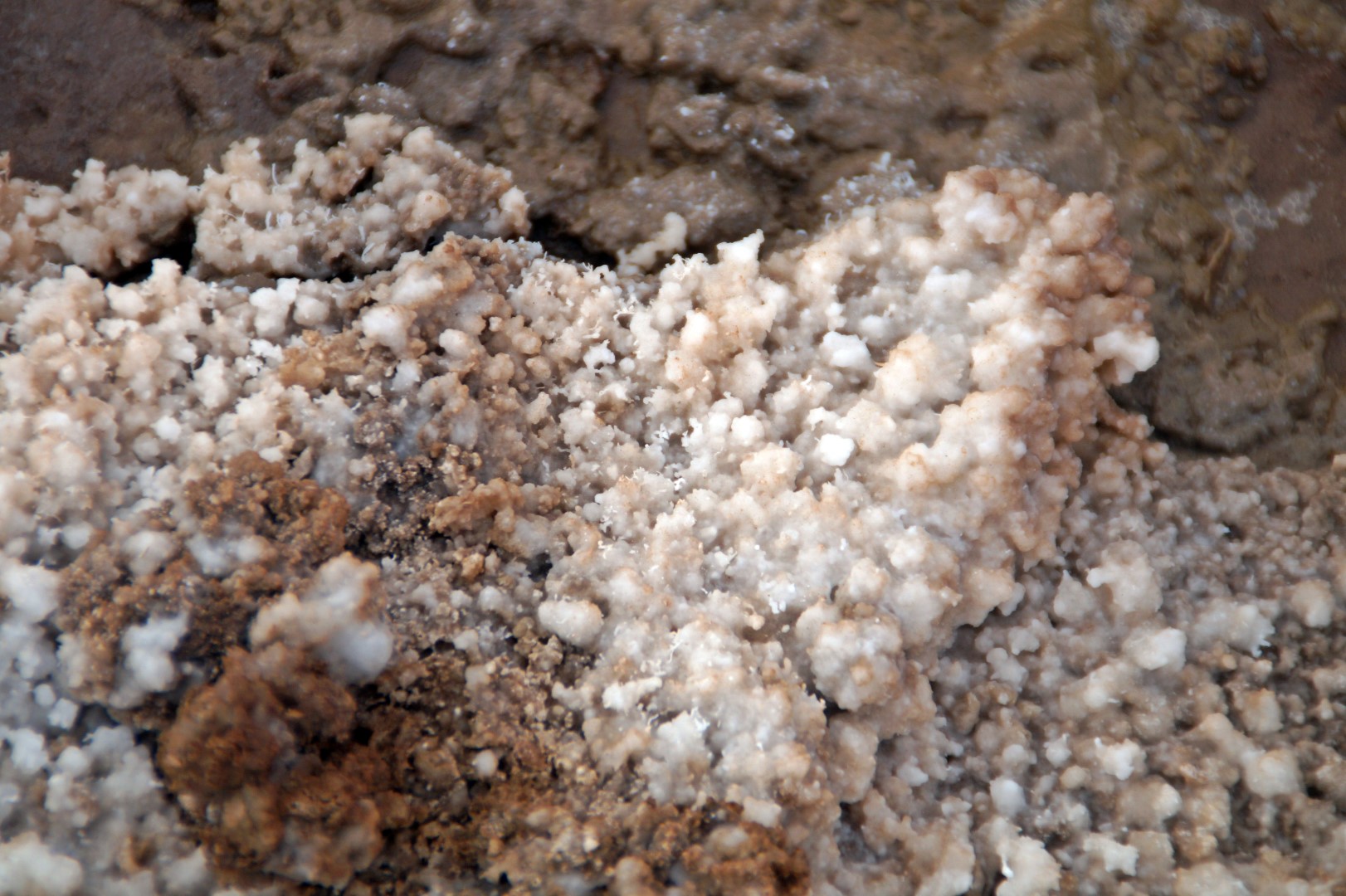
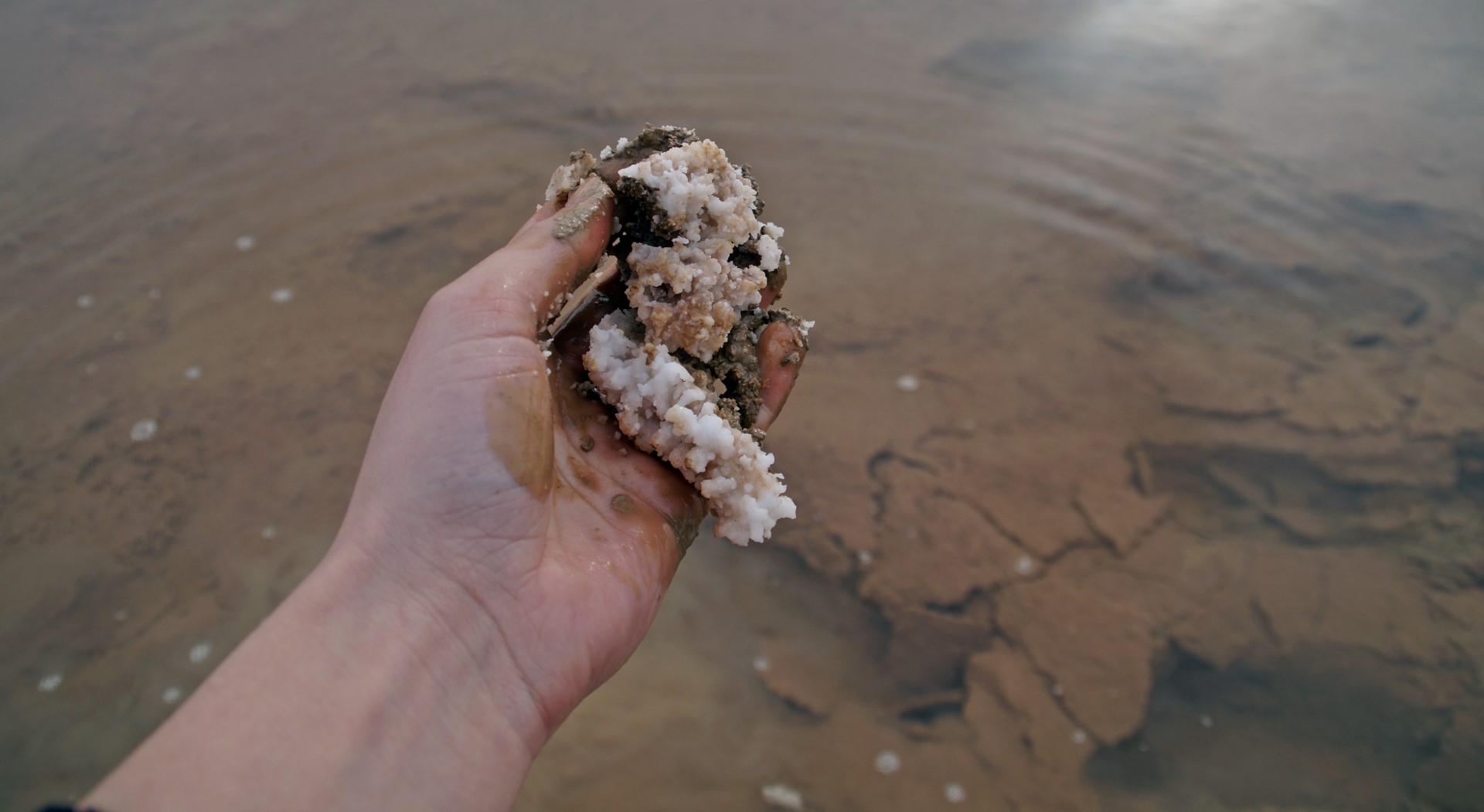
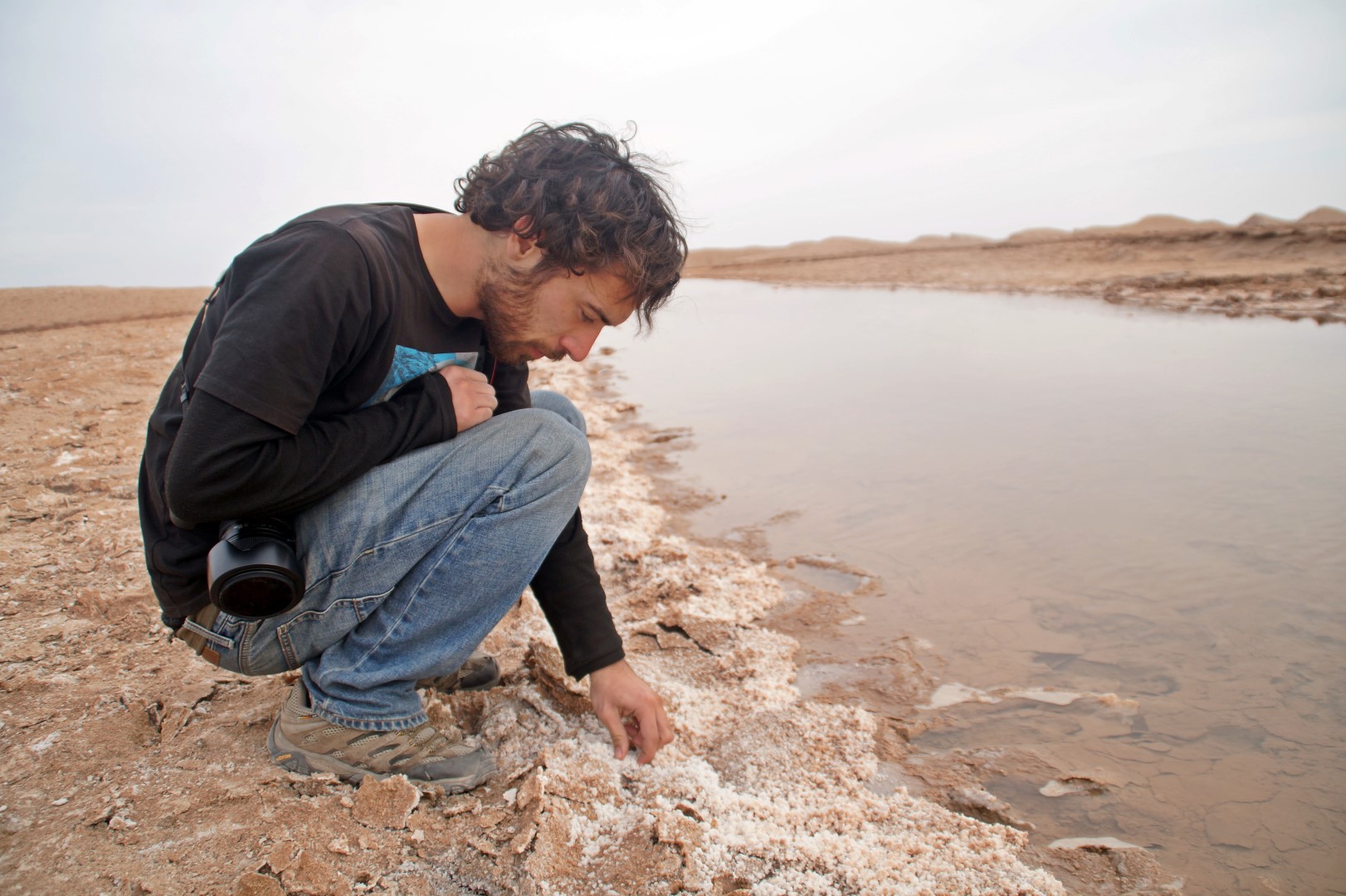
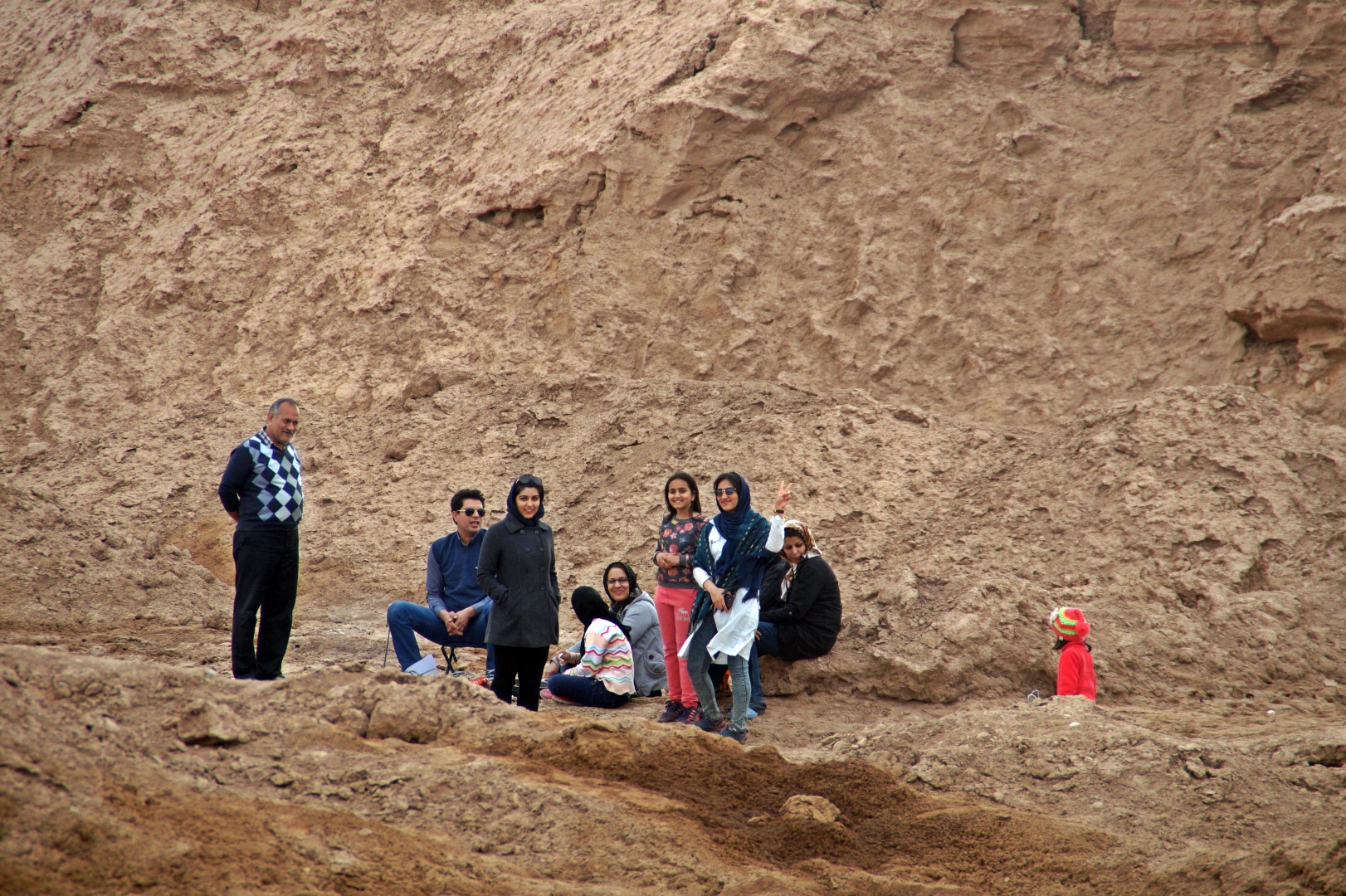
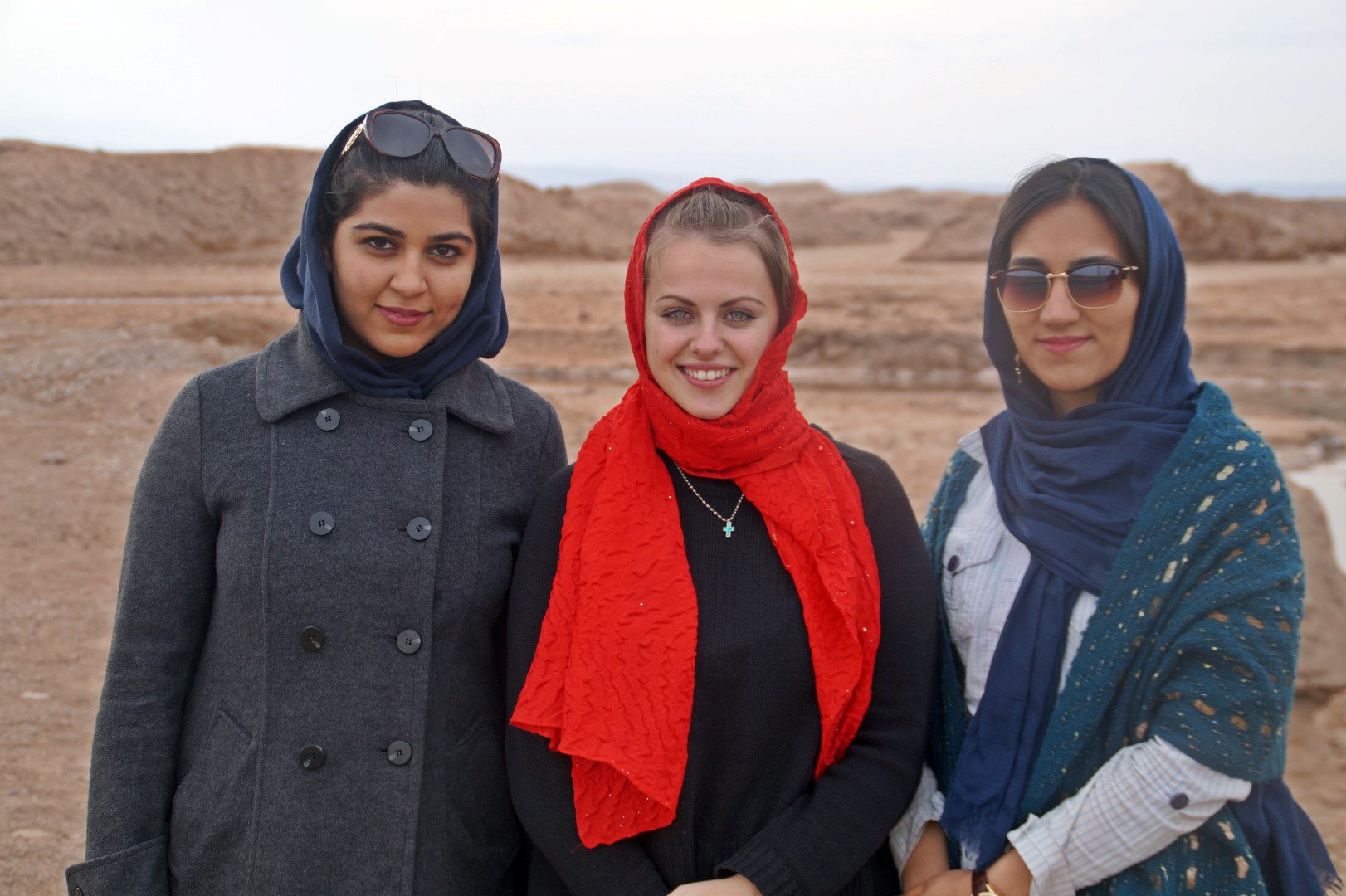
Back through the desert we went, and soon after, we came to the Egg Hills again. The area got this name because of the peculiar egg-like shape of the mud hills. The geology in the area is really interesting and it was exciting to be able to climb one of the ‘eggs’!
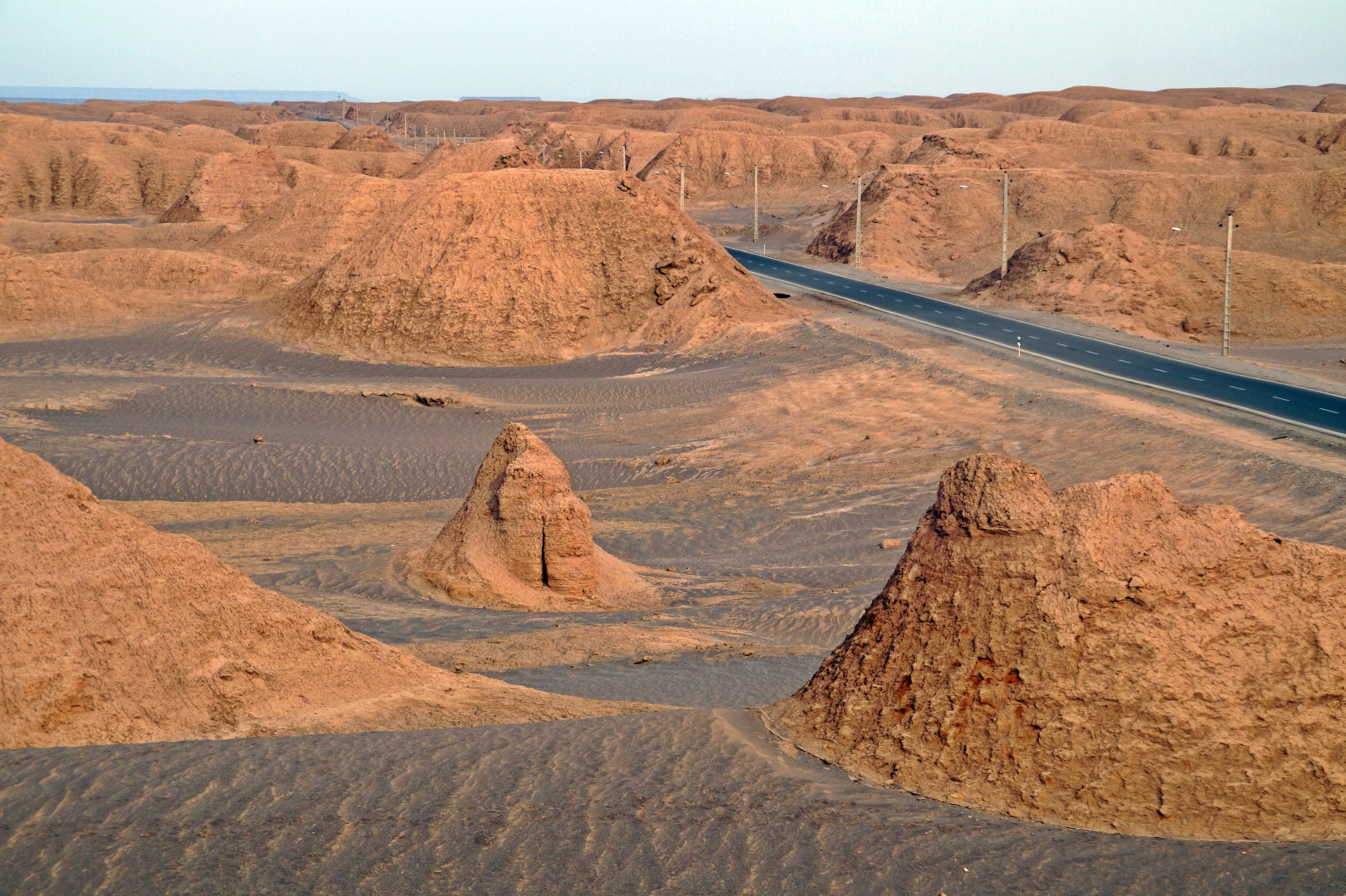
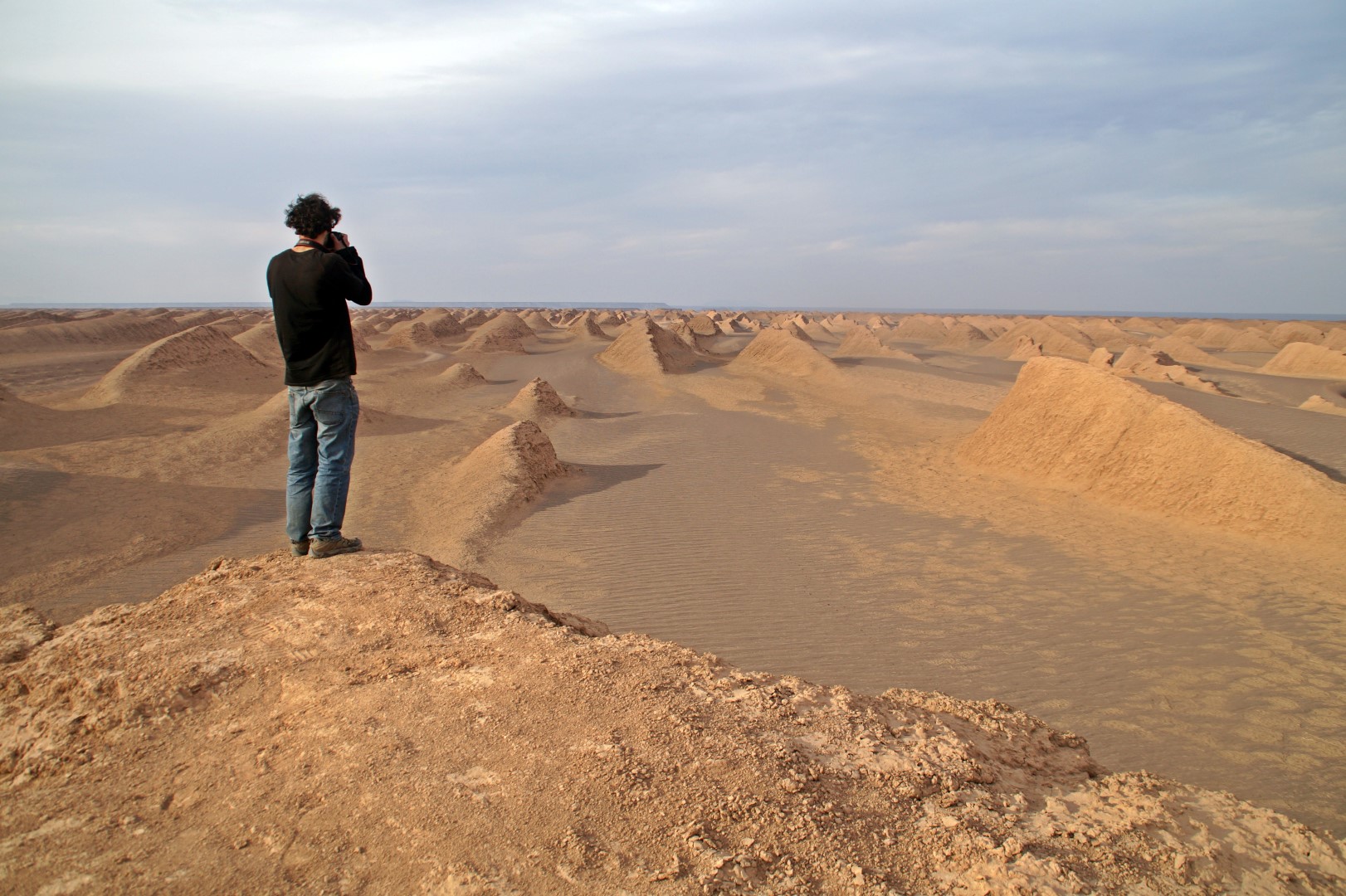
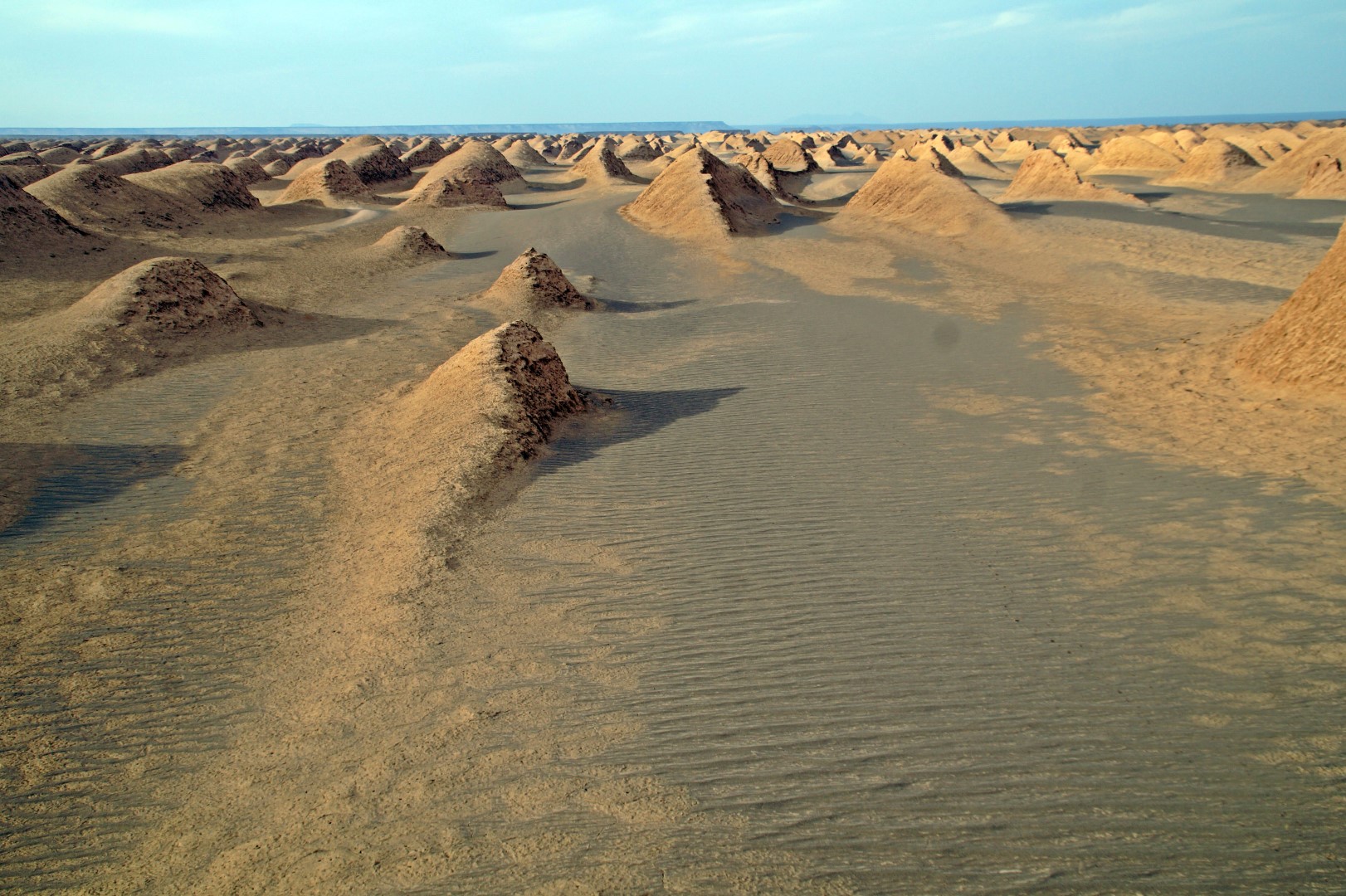
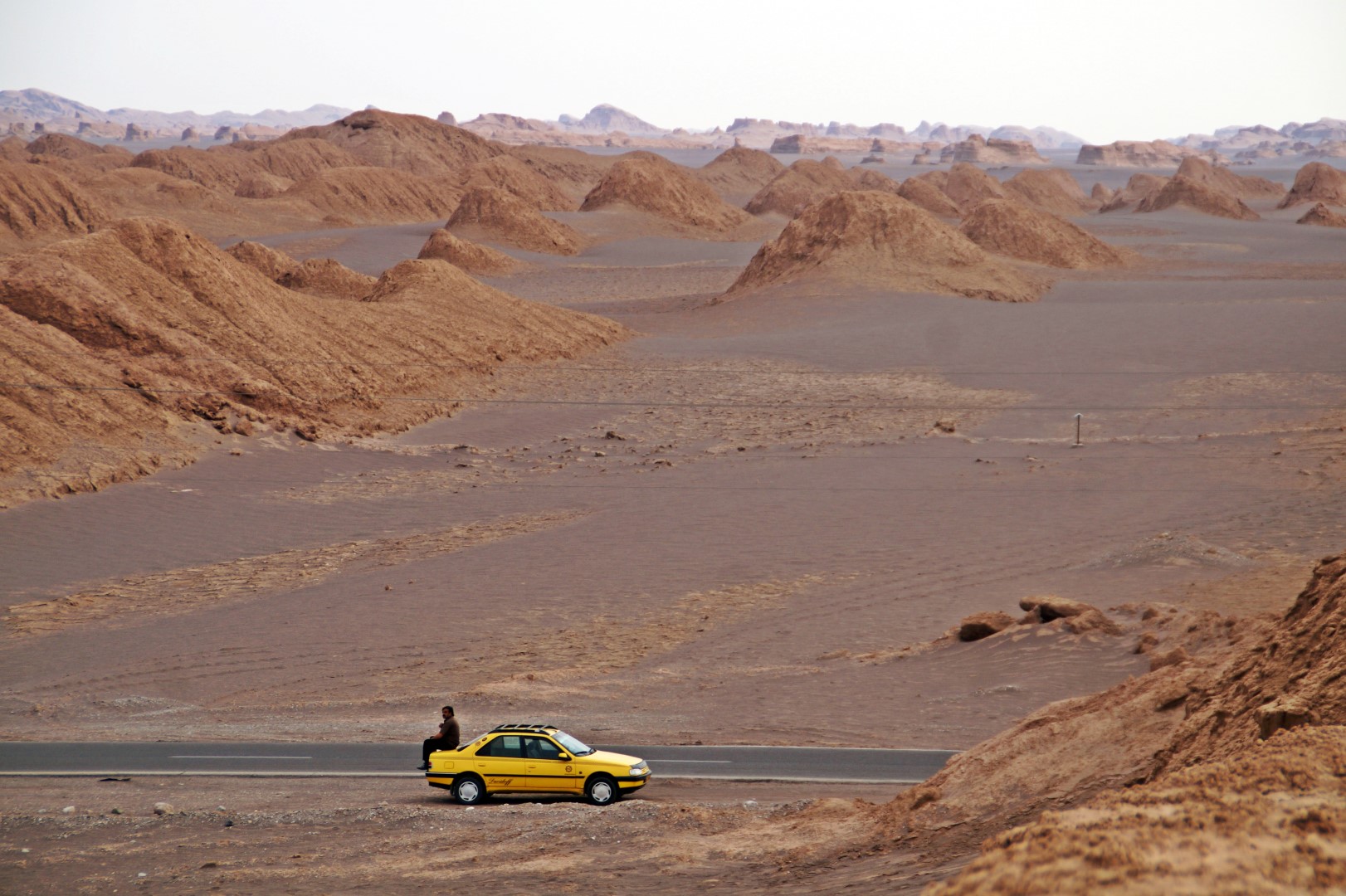
Not long after we had left the Egg Hills behind, we came to the tiniest castle I’ve ever seen! I couldn’t find any information about this small desert castle anywhere, but it sure was interesting to suddenly see this tiny structure appear in the middle of the vast desert.
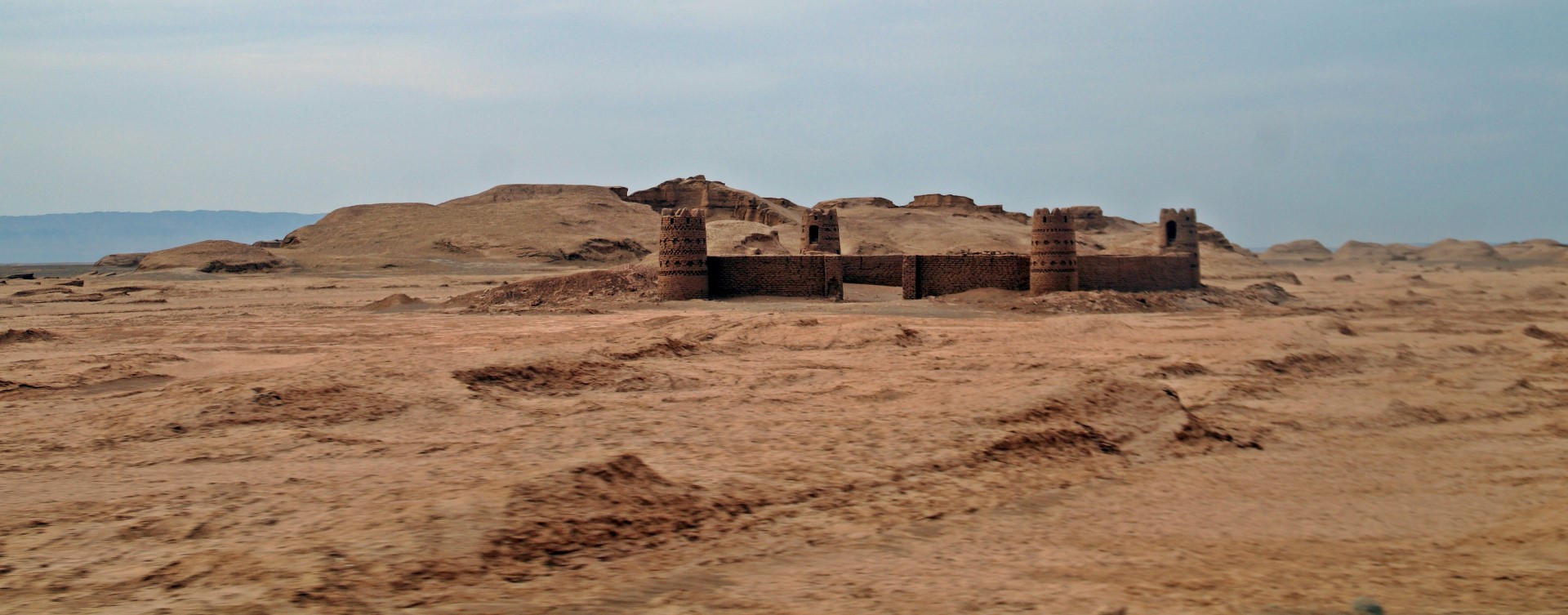
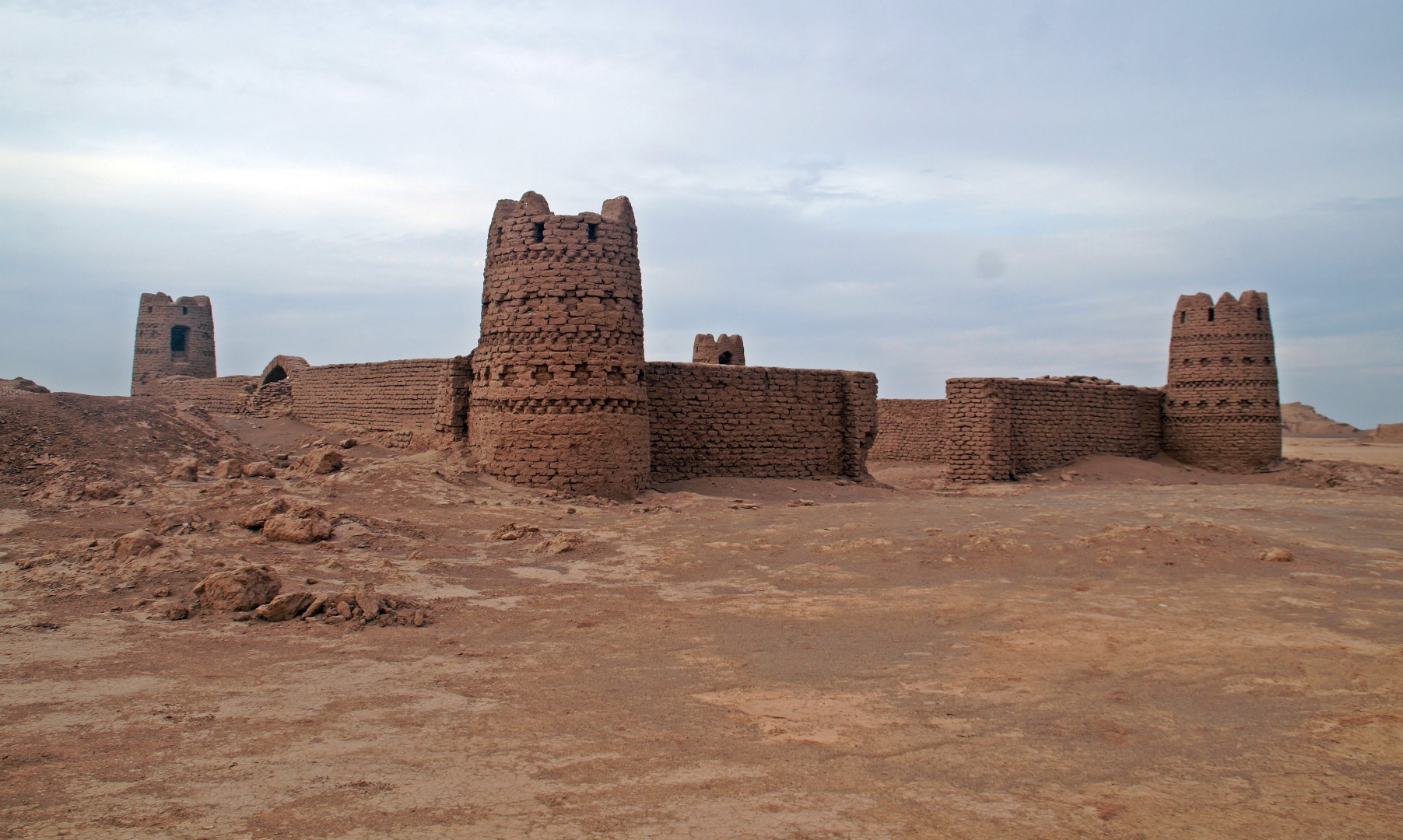
Next up was the last stop for the day, the Kaluts, some interesting geomorphological structures that are up to 120 meters in height. From afar, they kind of look like the ruins of a big city, but these natural structures were created over thousands of years by the wind and rain.
The Kaluts was supposed to be our sunset destination. Unfortunately, the sun was hiding behind the clouds for the entire afternoon, so we didn’t get our desert sunset, but we enjoyed spending time at the spectacular Kaluts nonetheless. We met several local people there, including a friendly guy, who offered us “friend-chips” – talk about having humour, huh? 😉
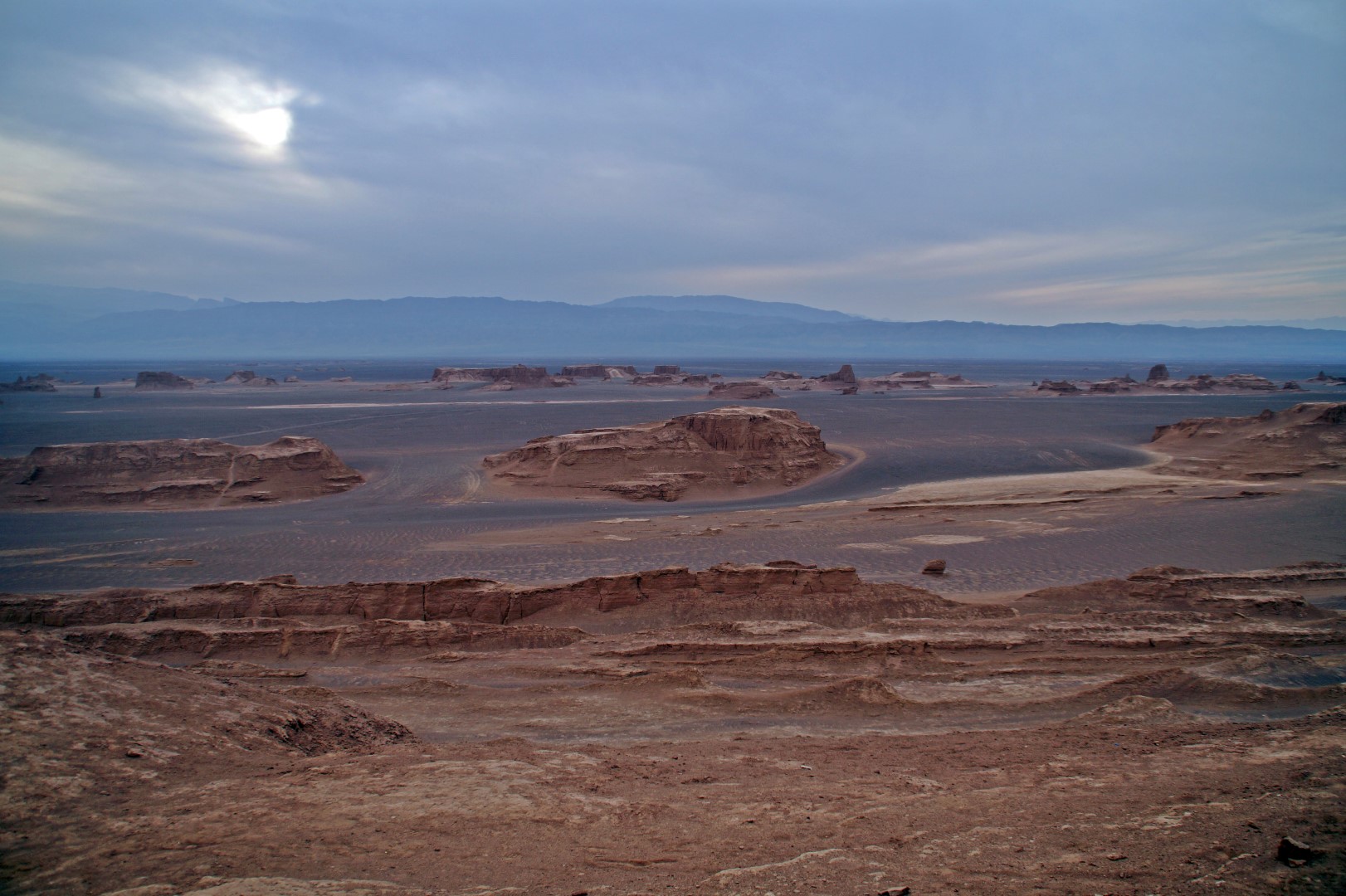
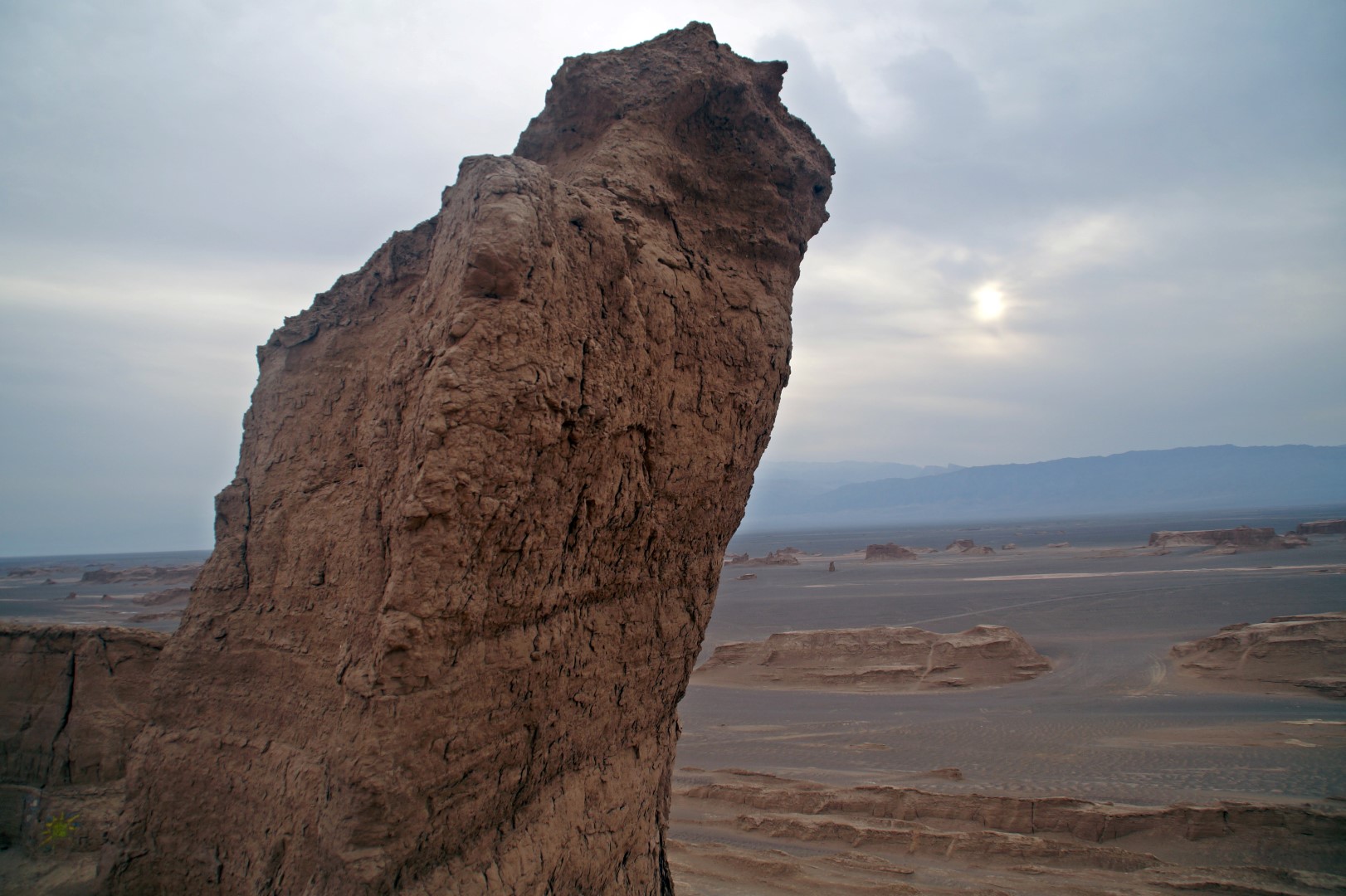
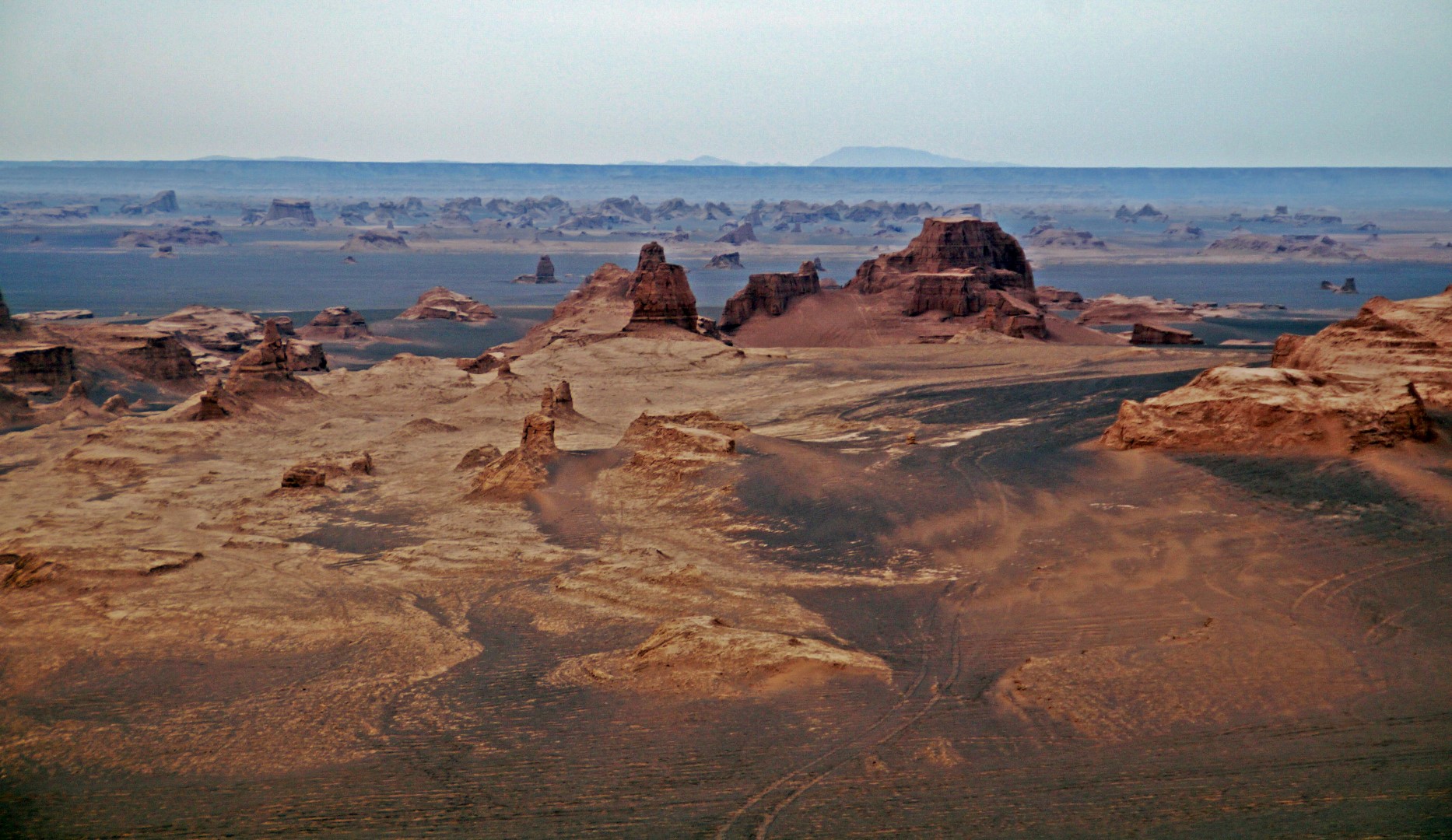
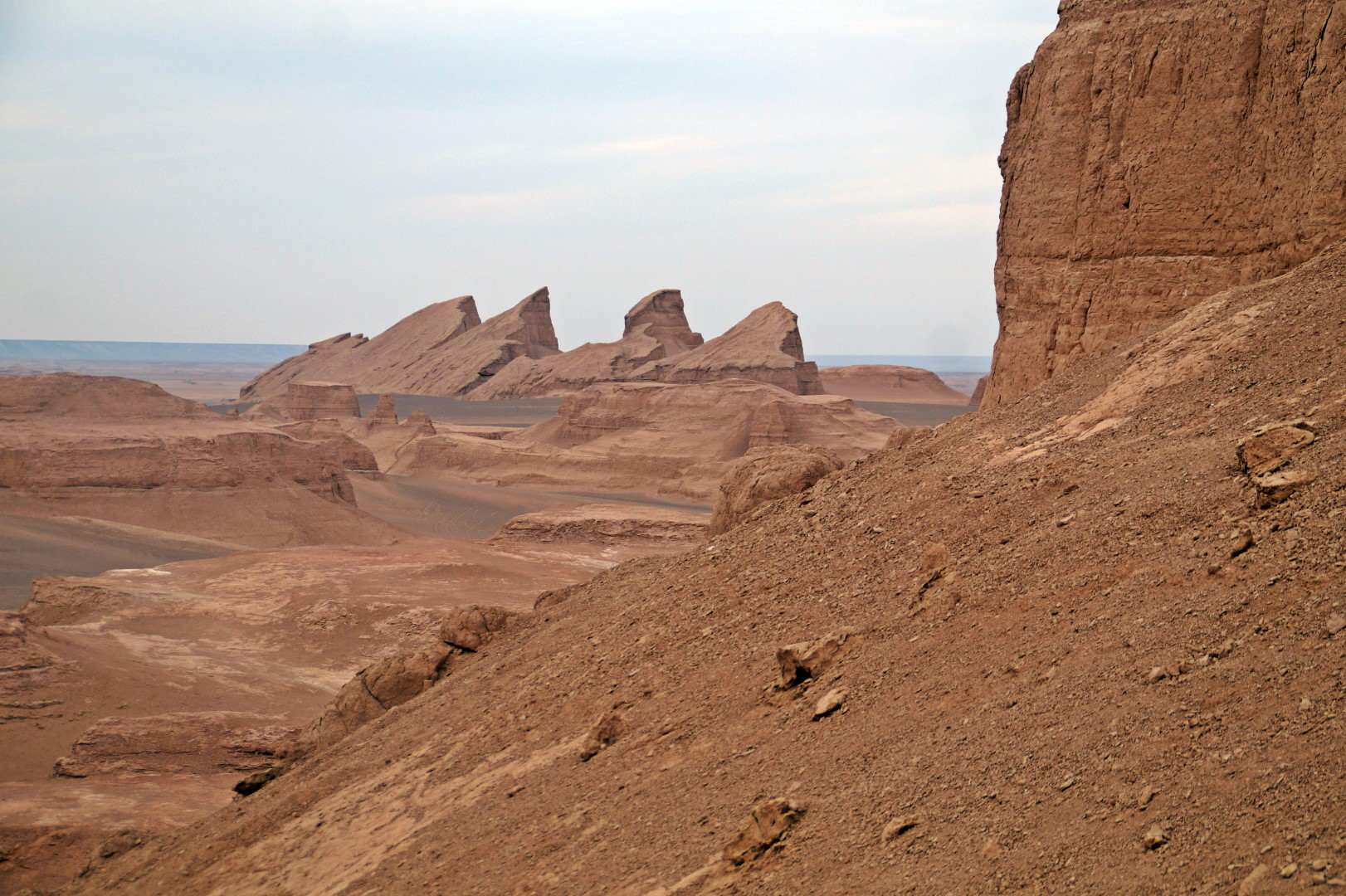
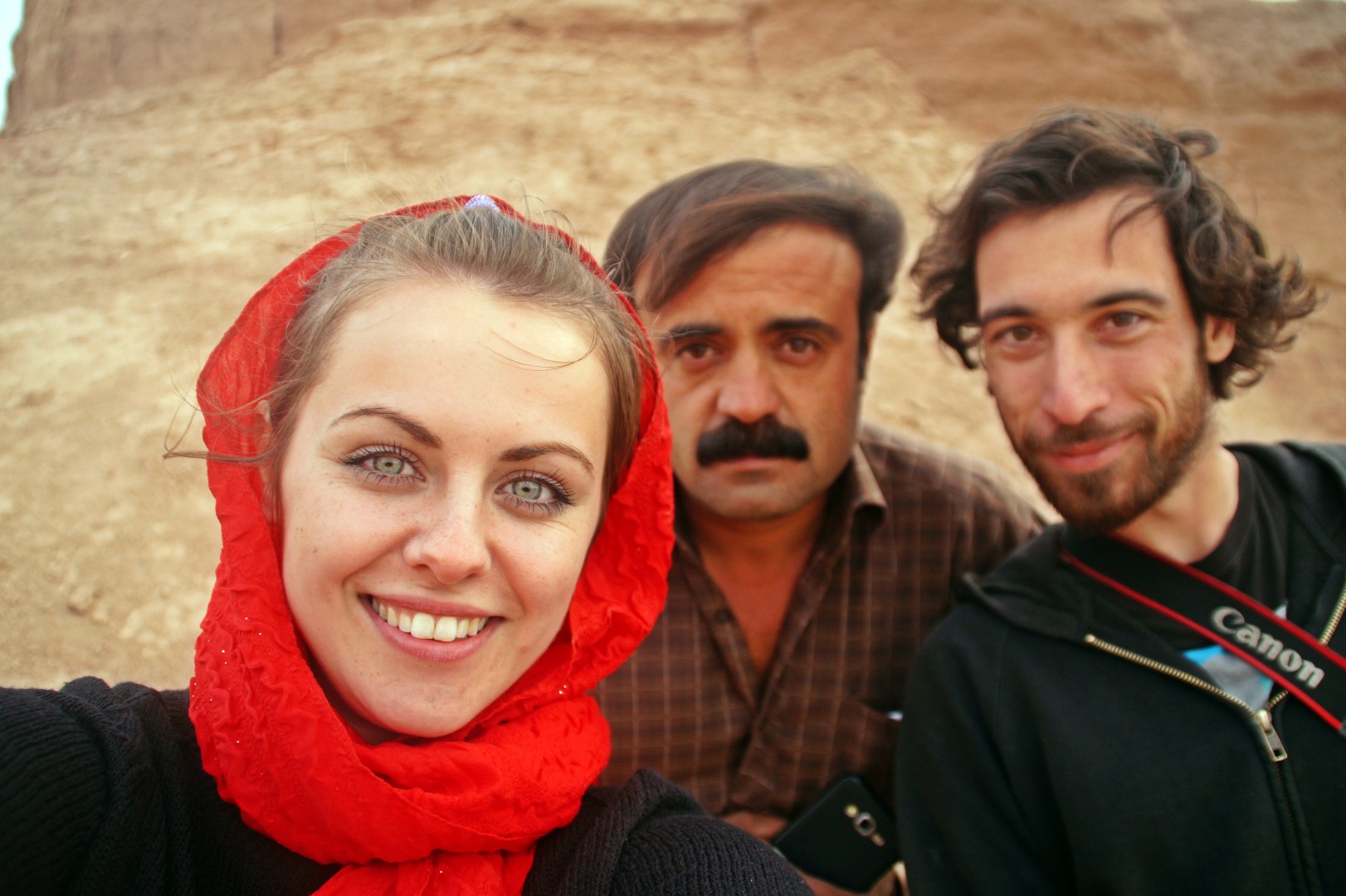
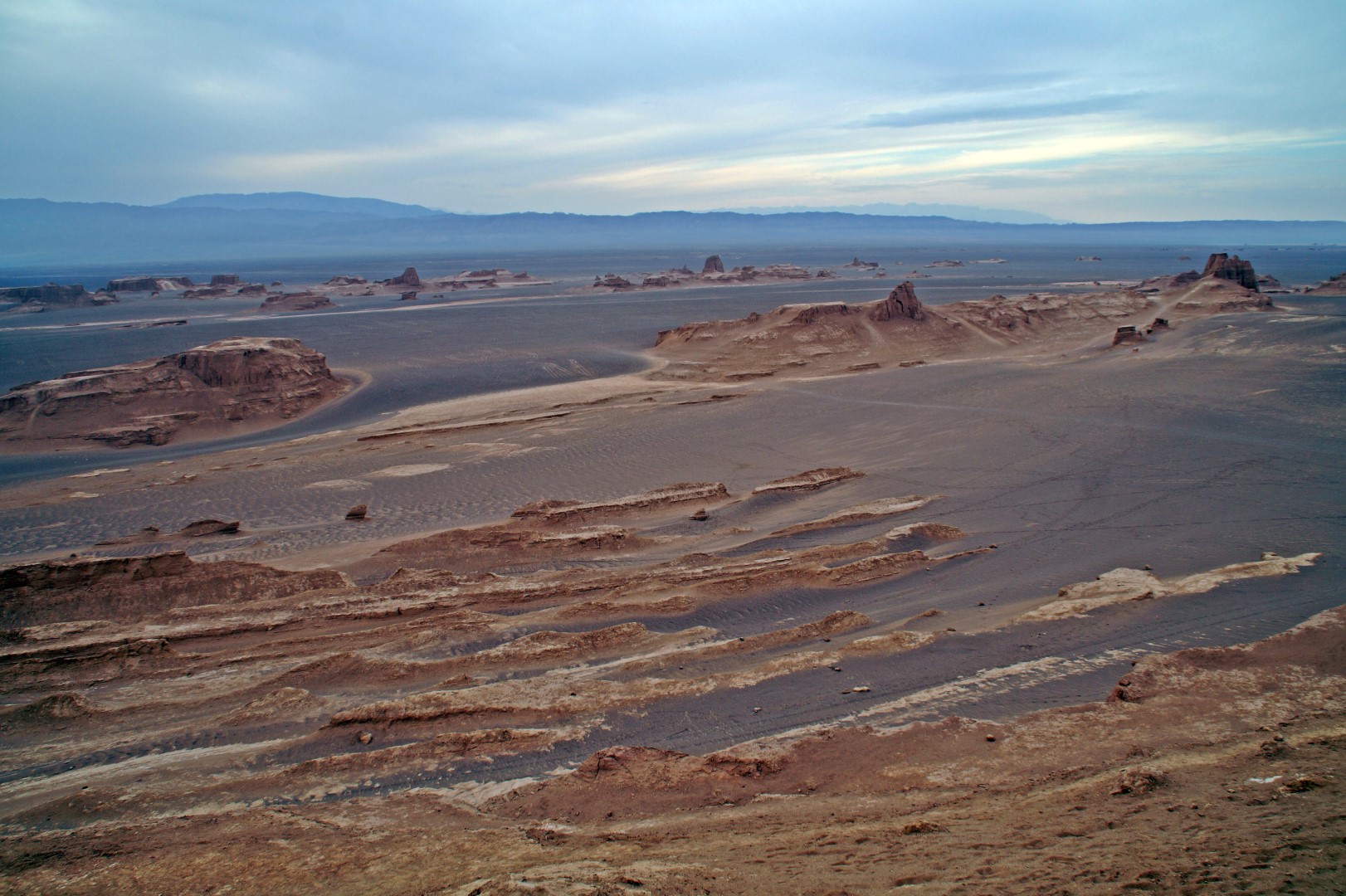
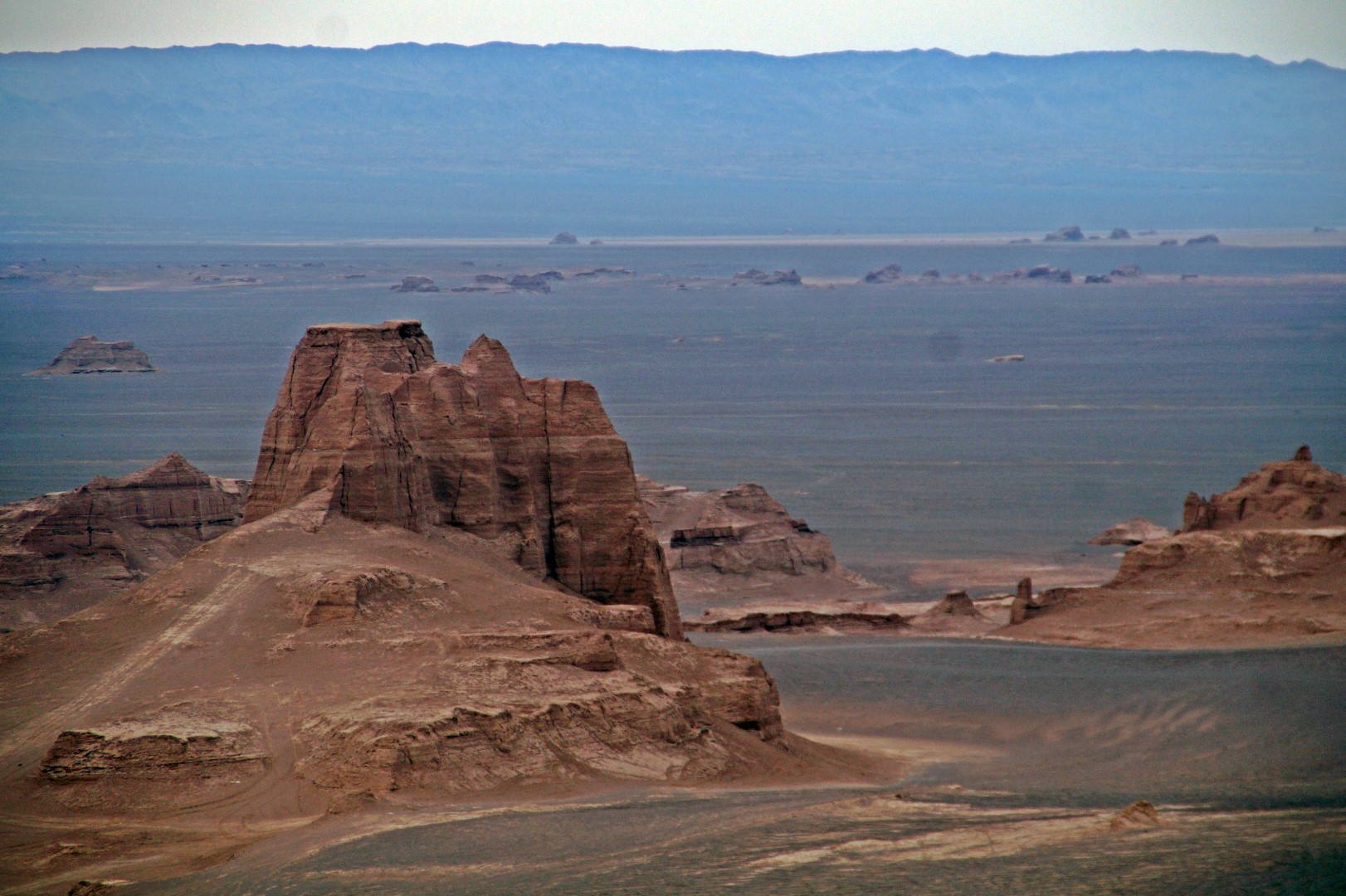
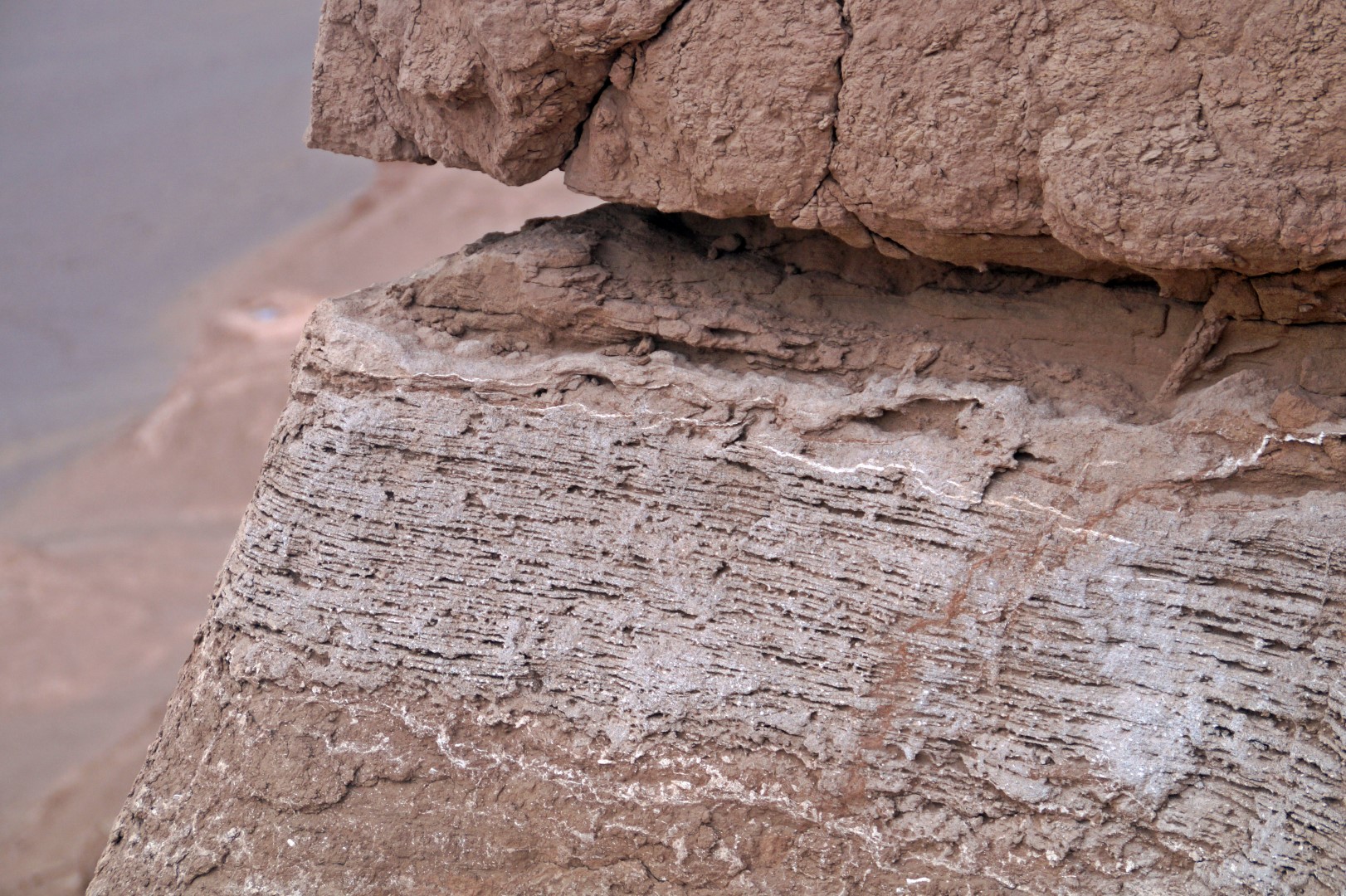
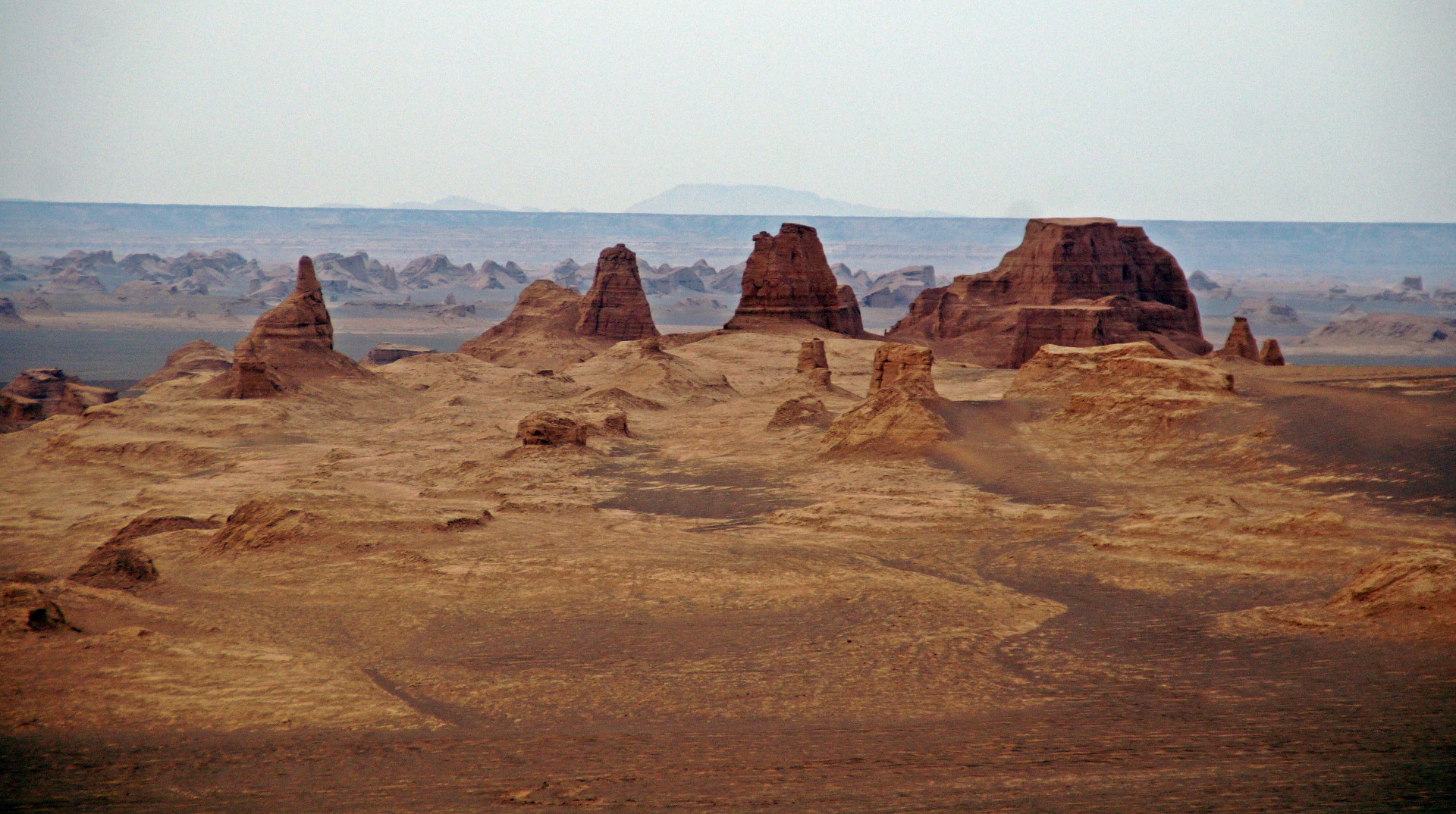
The trip to the unique Lut Desert was a great experience that was worth every penny. I’ve seen quite a few deserts in my life, but never one with that kind of geology with its salty cliffs and rivers. It’s a special place to go and one that shouldn’t be missed on a trip to Iran!
Travelling to Kerman and the Lut Desert
- The bus from Yazd to Kerman costs 160,000 rial (5 USD) per person and takes about 5½ hours. The bus station in Yazd is located 12 km. outside the city center, so a taxi is necessary. The bus station in Kerman is located 5 km. outside the city center, so I would also recommend a taxi there. We paid 100,000 rial (3 USD) for a taxi to the center of Kerman.
- In Kerman, we stayed at Omid Hotel the first night, which cost us 600,000 rial (18½ USD) for both in a room with single beds. The hotel was the worst we’ve stayed at in Iran in terms of cleanliness and comfort, and there was no Wi-Fi or breakfast included. On the upside, the owners are really nice and it’s cheap! There’s an internet café near the hotel, which costs 50,000 rial (1½ USD) for two hours.
- The next two nights, we stayed at Akhavan Hotel, which is really really nice. We were offered to pay only 25 USD per night for a private room with single beds, including breakfast and fast Wi-Fi. This was the best place that we had stayed at in Iran so far. Please note that the price they gave us is a special price for “budget people”, as they called it, and it may not apply if they’re close to being fully booked, and likely not in the summer season (we were there in the low season).
- For tours outside of Kerman, I recommend using Akhavan Hotel, as they offer various combinations of tours for decent prices. We paid 30 USD for the desert tour in all and 40 USD for the Bam/Rayen/Mahan tour in all.
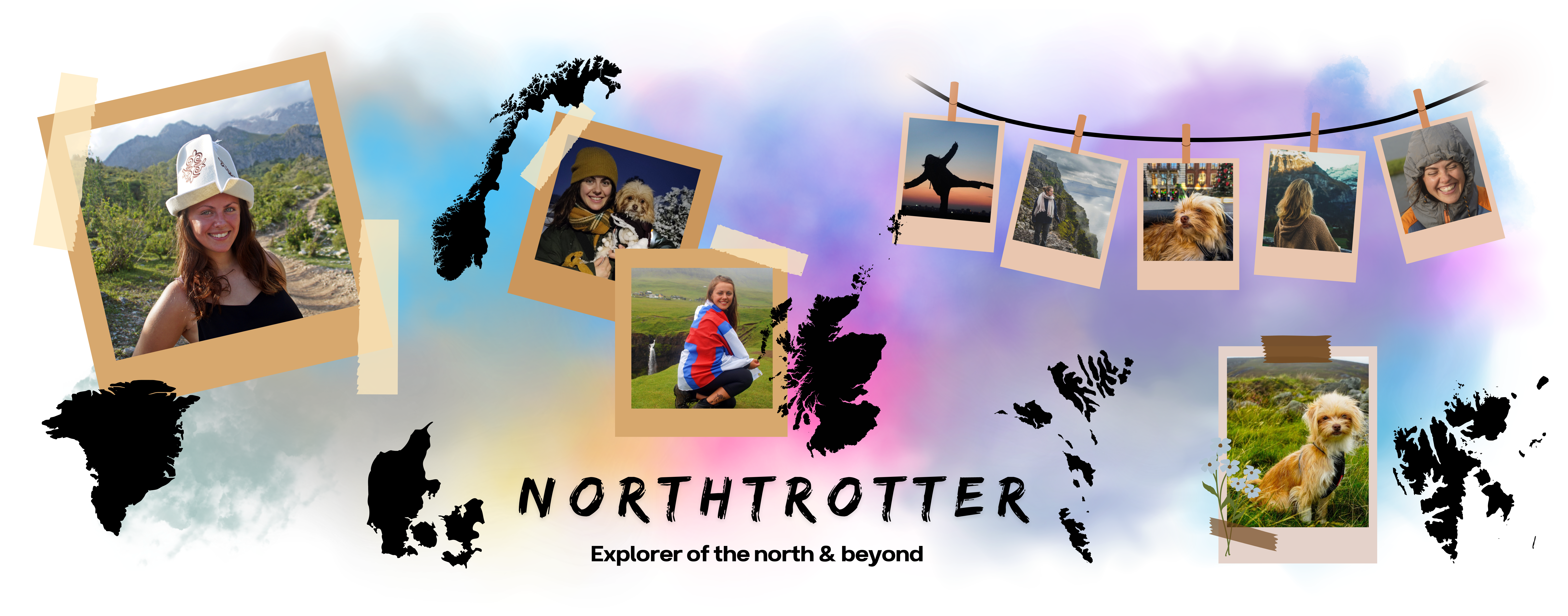
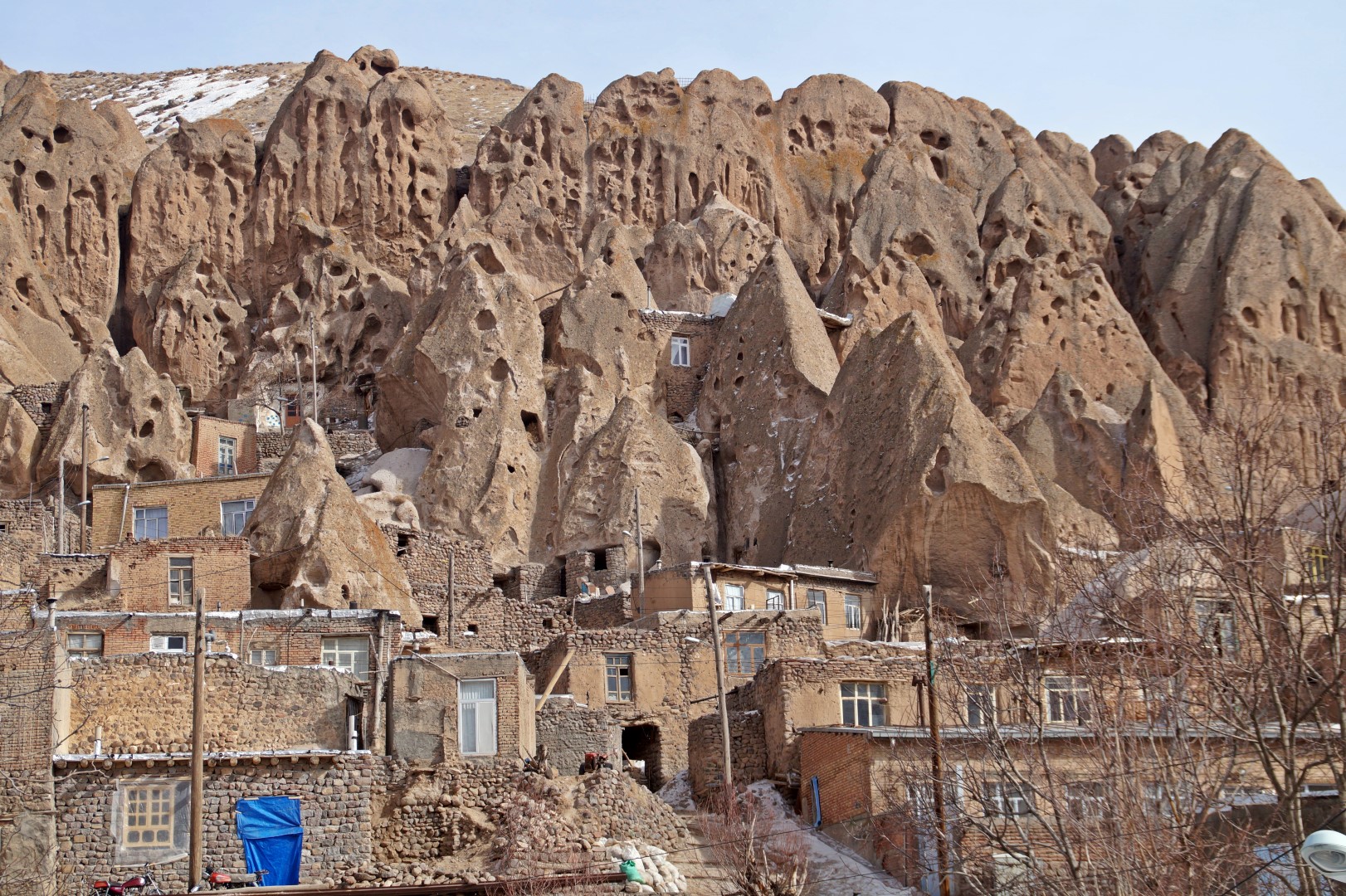
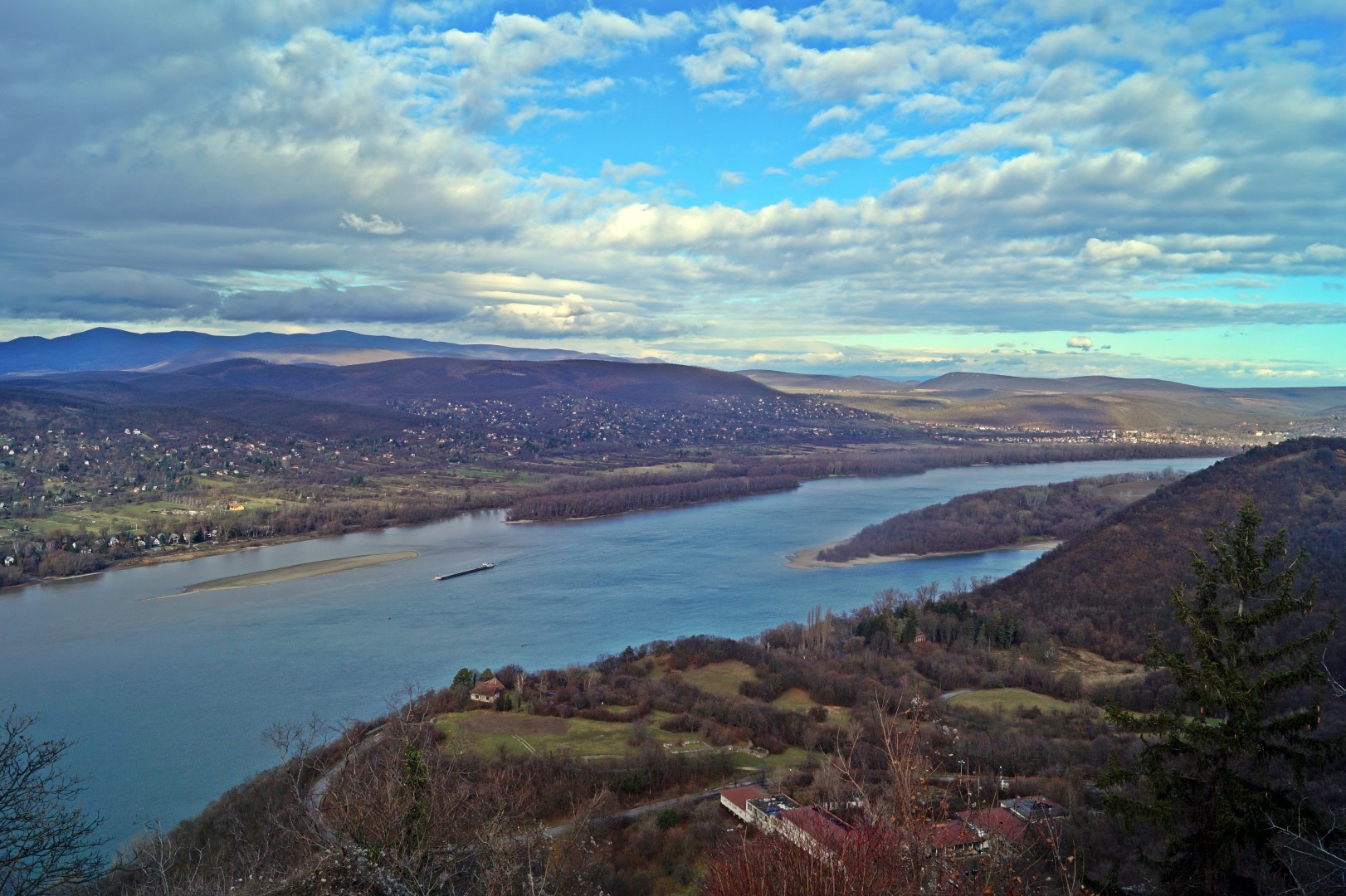
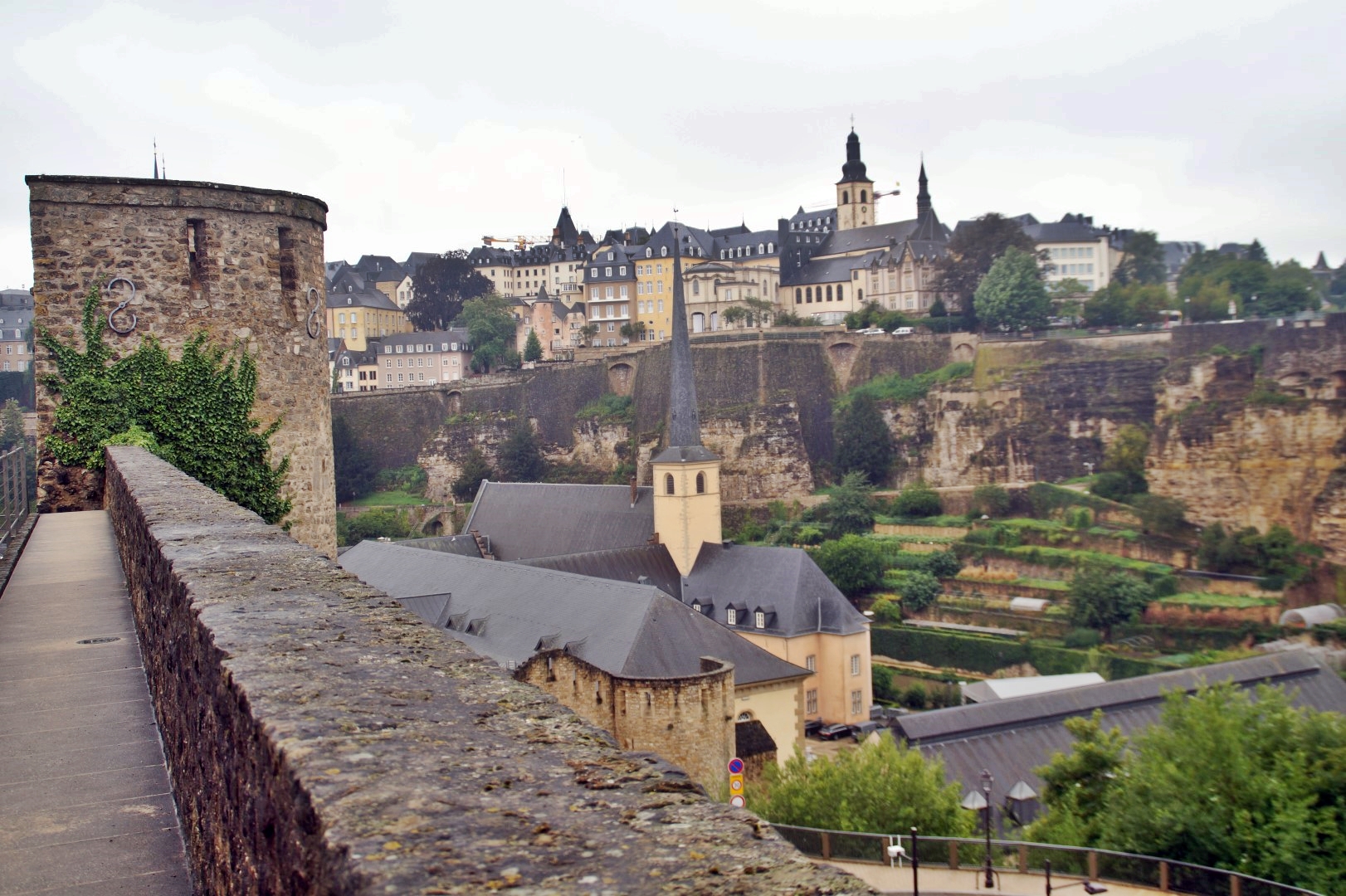

3 COMMENTS
Adrian Choi
5 months agoThanks for the very true message about Iran !!
Ann
8 years agoMy feelings about the place you saw = to the cite by Tom Hanks ““The desert, when the sun comes up…I couldn’t tell where heaven stopped and the Earth began.” It is an endless land with endless possibilities to dream…
Your pictures are great and amazing as always, dear Mel! You look so fantastic!
Melissa Cherry
8 years agoThat’s such a beautiful quote Ann <3
Thank you for your kind words once again :-*